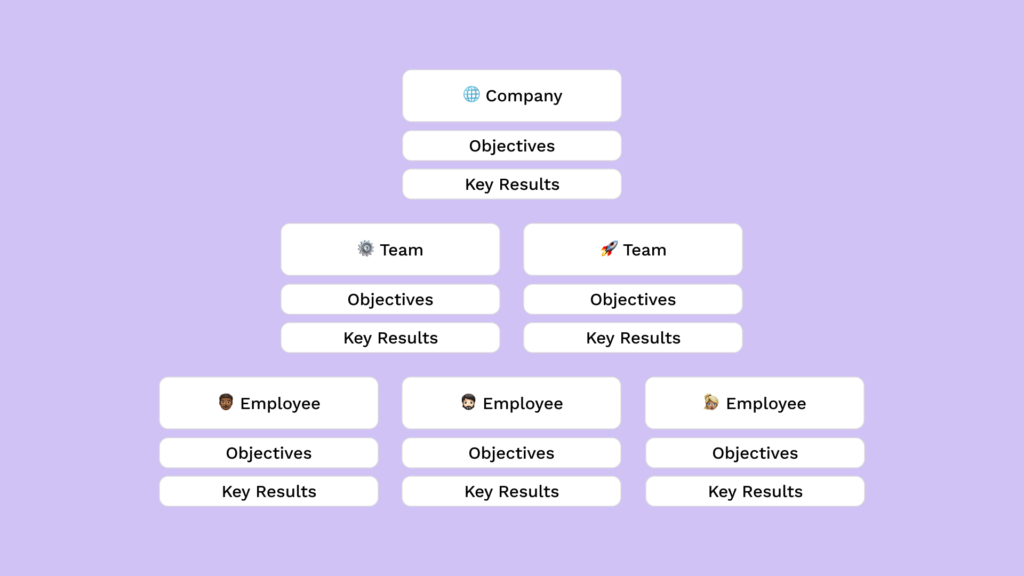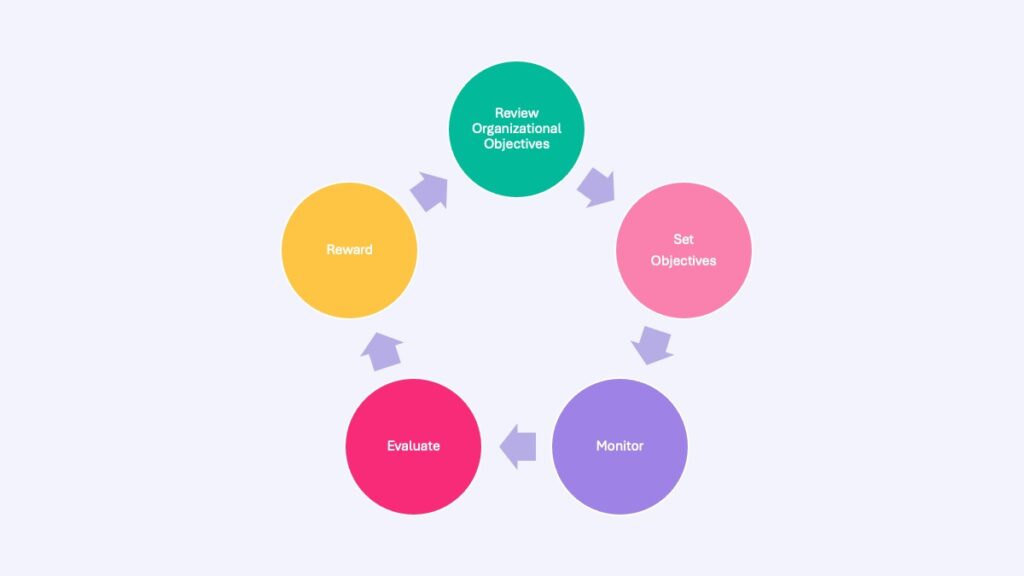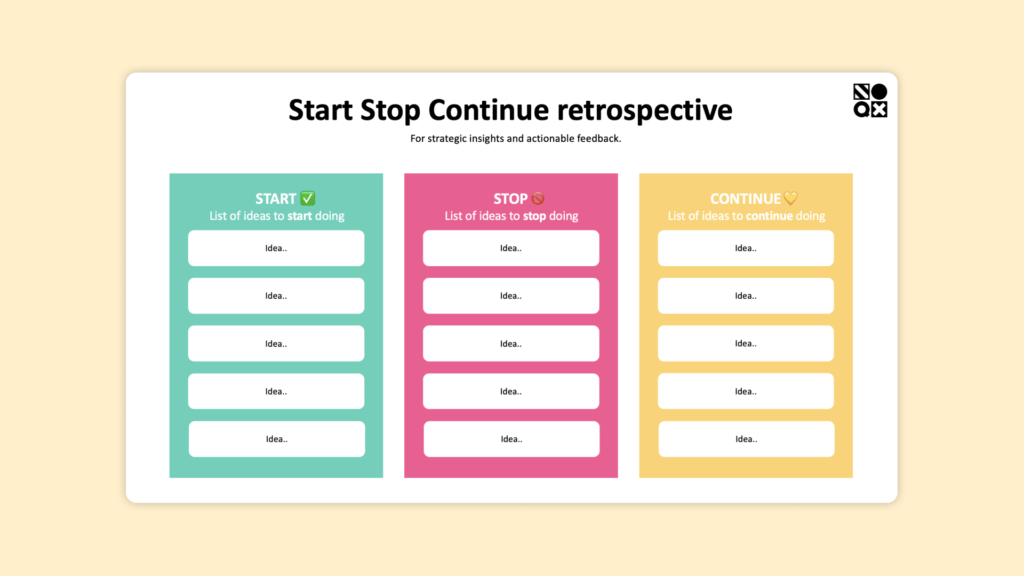Learn how OKRs streamline processes, foster alignment, and drive growth in today’s dynamic business landscape. From defining clear objectives to overcoming common pitfalls, this article offers actionable insights to help businesses harness the full potential of OKRs. Join us at NOQX as we explore the transformative power of OKRs and how they can propel your organization towards success.
The background of the OKR framework

The Objective and Key Results (OKR) framework is a pivotal tool in modern management, revolutionizing the way companies set and achieve goals. This approach was popularized in the 1950s by Peter Drucker, a leading management expert, who introduced the concept of Management by Objectives (MBO). MBO involves setting goals for the organization, then for individuals, with a focus on providing feedback on the outcomes.
In the 1970s, Intel‘s CEO Andrew Grove further developed the MBO framework into what we now know as OKR. The OKR framework became a more structured method for connecting overarching goals (Objectives) with concrete results (Key Results). Intel successfully utilized OKR to drive the company’s growth and innovation.
John Doerr, a junior colleague under Andrew Grove, gained valuable insight into the framework while employed at Intel. Later, as an investor, Doerr introduced the OKR framework to various companies in Silicon Valley. When he joined Google’s board in the 1990s, he implemented OKR there as well. By using OKR, Google streamlined its goal management and focused on the right initiatives.
In the 2000s, OKR rapidly spread worldwide, and many leaders in growth companies became interested in the framework. Companies like Spotify, Airbnb, and Dropbox have adopted OKR to enhance clarity, track progress, and prioritize initiatives for long-term goal achievement, resulting in improved performance and goal orientation.
What is an OKR?
OKR consist of two main components: Objectives and Key Results. It’s important to note that people might refer to OKR by different names. For example Big Hairy Goals, Rocks, Must Win Battles, or Wildly Important Goals. But they all fundamentally serve the same purpose.
Objectives: Objectives are the core of OKR and represent the overarching goals that an organization or team aims to achieve. These should be inspiring, challenging, and aligned with the organization’s overall vision and strategy. Objectives should also be qualitative, using words to describe the desired state or outcome. Ideally, Objectives should be concise and memorable. Objectives can have their own frequency and timeframe, typically a quarter, six months, or a year. We recommend having a maximum of three Objectives at the corporate level.
Key Results: Key Results constitute the quantitative and measurable part of OKR. To fulfill the overarching goal (Objectives), it’s necessary to achieve concrete and quantifiable outcomes. Key Results quantify and clearly establish whether or not the goal has been met. We often document Key Results with numbers, percentages, or other metrics. By tracking Key Results, the organization can assess whether they are on the right track to achieve their goals. We recommend having between 1 and 6 Key Results for each Objective.
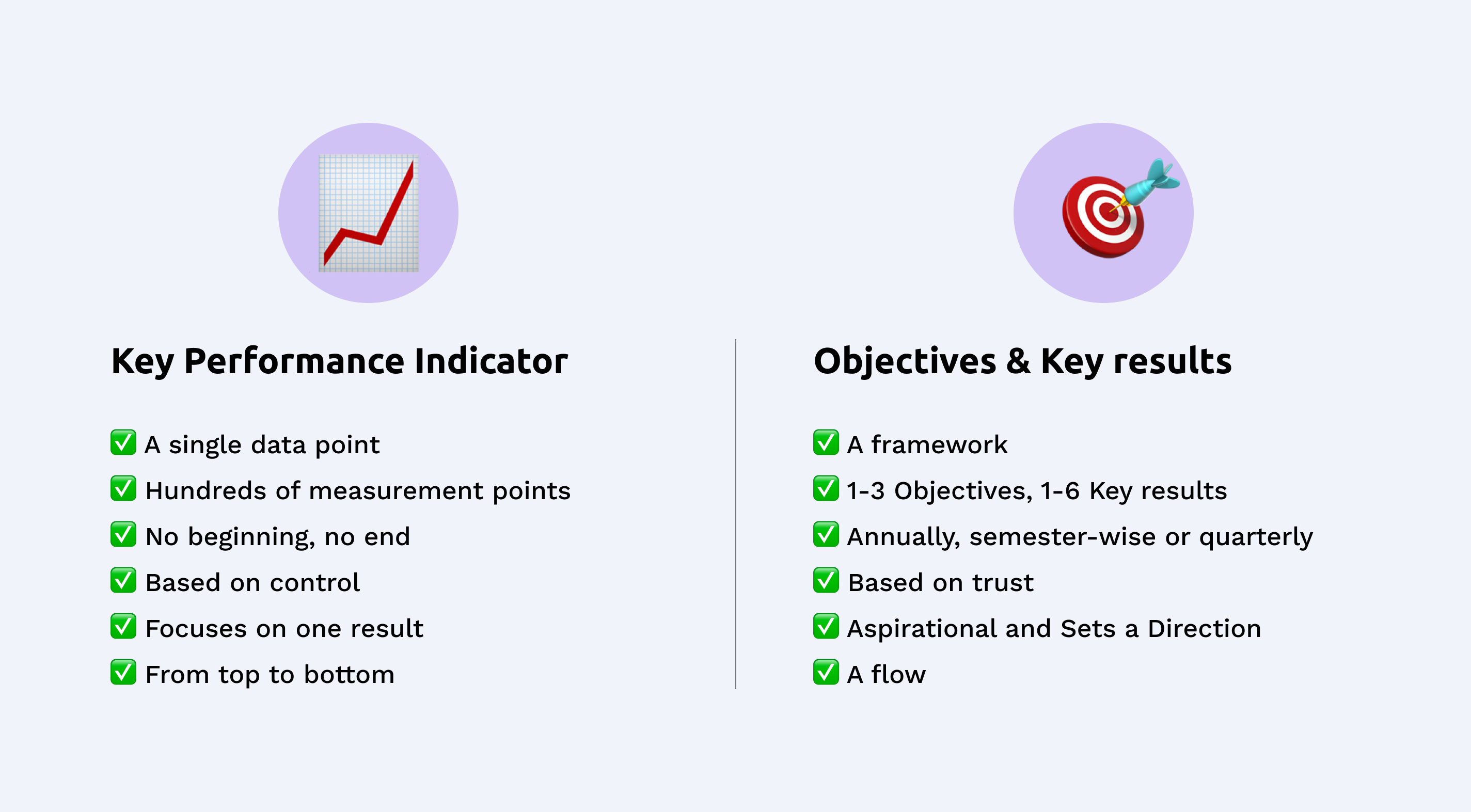
Key Initiatives
In the OKR framework, “key initiatives” are the central actions or projects necessary to achieve the strategic objectives. These initiatives act as drivers that support and promote progress towards the goals. They are concrete actions or projects focused on solving specific challenges, developing new products, or improving processes. Key initiatives are strategically chosen to ensure objectives are met and are typically clearly defined, time-bound, and linked to measurable outcomes to ensure progress and effectiveness in OKR implementation. One can think of key initiatives as the “collective to-do list” that leads to achieving the objectives.
Benefits and stats
📊 Employees working with team OKRs have a better understanding of the company’s vision compared to those who do not use OKRs. This applies to about 72% of those using OKRs, compared to only about 50% without. Additionally, 60% of employees working with OKRs have a concrete understanding of the company’s strategy, whereas it’s only about 37% in companies without OKRs. (Haufe Talent)
🌟 83% of companies recommend the OKR framework to others as a valuable goal-setting method to achieve company objectives. (Haufe Talent)
🎯 The primary reasons for recommending OKRs include increased focus and prioritization, perceived impact on company culture, and improved transparency regarding the company’s strategy. (Haufe Talent)
📈 OKRs contribute to measurable results such as a better understanding of the company’s strategic goals and an improved communication and feedback culture. (Haufe Talent)
👍 According to surveys, 83% of companies using OKRs report benefiting from implementing the framework. (Haufe Talent)
🚀 Employees using OKRs feel their companies are well-equipped for the future. 67% of those working with OKRs believe their companies can respond quickly to changing conditions, compared to 50% among those without OKRs. (Haufe Talent)
😊 Employees in companies using OKRs are generally more satisfied with their jobs. 78% of employees using OKRs are satisfied with their jobs, compared to 65% in the comparison group without OKRs. (Haufe Talent)
🤝 Teams using OKRs often experience a more successful culture of collaboration. This is due to more frequent constructive feedback, managers acting more as coaches, and more employees taking active responsibility for their own actions, decisions, and results. (Haufe Talent)
💼 Sears Holding Company saw an impressive increase in sales per hour by 8.5% within 18 months after implementing OKRs for its 20,000 employees. To achieve such results, consistent use of OKRs every cycle was crucial. (Sears Holding Company)
📈 The consistent use of OKRs at Sears also resulted in an 11.5% higher chance of high performance among their employees. (Sears Holding Company)
📉 In companies where OKR usage was inconsistent, i.e., between 1 to 3 cycles per year, only a marginal 3% increase in performance was observed. (Sears Holding Company)
Goals in height and width create complexity
Goal management can become complex, especially in larger organizations, making it challenging to ensure alignment among all employees.
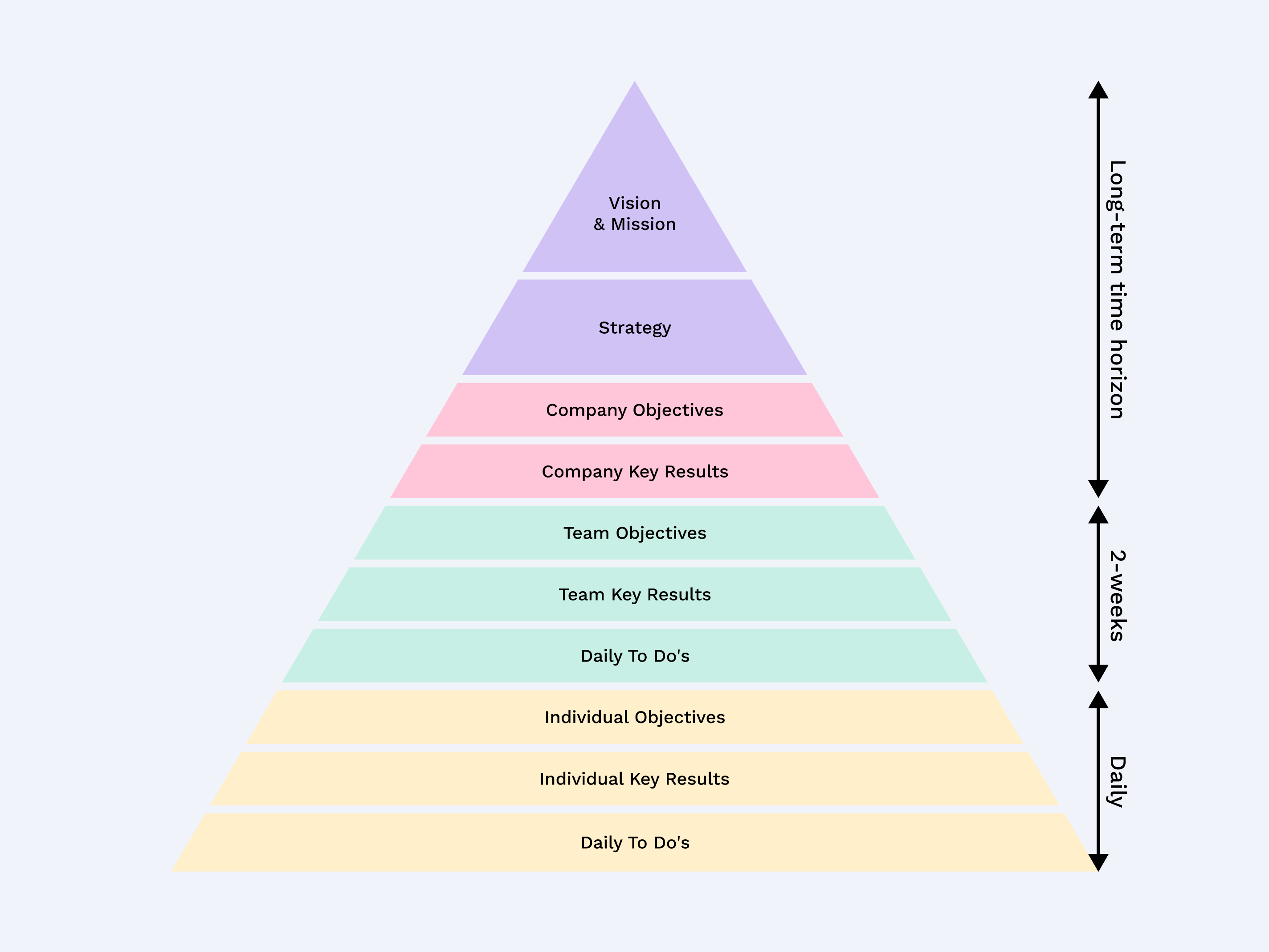
The ultimate goal of a company is its vision, typically spanning at least a 10-year horizon. The vision should be inspiring and generate engagement among employees, customers, investors, and owners. The vision, although it may not fully realize, serves to chart a direction for the company. It indicates the type of company that everyone aims to build together.
Following the vision, a company usually has a strategy for the next three to five years, outlining long-term goals for what it aims to accomplish. The next time horizon often consists of annual goals, specifying what the company aims to achieve in a particular year. The organization breaks down annual goals as part of the strategic process, documenting them in an operational plan. We divide these annual goals into quarters and further segment them into months.
You can break down monthly goals into sprints, typically spanning two-week periods. Further, you can deconstruct these sprints into employees’ daily to-do lists, which represent their daily goals. In addition to these time horizons, there are at least three levels of goals. Corporate goals, team goals, and individual goals. Given this context, it’s understandable that employees may find it challenging to identify the most important goals to work towards.
70% of companies do not achieve their goals
70% of companies do not achieve their goals. Inflation, war, and interest rates at an entirely new level create uncertainty in the business world. The top management reevaluates growth goals in response to the changed macroeconomic situation. Most companies hit the brakes because they are not meeting their set goals.
This is one of several conclusions from 2023 MarginPlus Survey, based on insights from approximately 300 business leaders. 70 percent of the surveyed companies state that they fail to reach their growth and efficiency goals. The respondents attribute their failure to internal obstacles. Including a lack of flexibility and the inability to build a scalable digital infrastructure.
Other factors include the speed at which the company operates and how quickly it can change goals when conditions shift. 80 percent of respondents state that their companies are trying to accelerate their change efforts. But it is challenging to quickly reorient the organization. Three out of the four most crucial areas in change efforts involve the necessity to digitize their operations.
Over 90% of respondents are investing in lasting change projects to meet growth goals and boost success chances. Specifically, they mention creating new positions at the executive level, redefining their strategic ambitions, and increasing their budgets to fundamentally transform their operations.
Information chaos hinders growth
According to Deloitte, 33 percent of companies experience significant difficulties in understanding and navigating the digital infrastructure. 34% think digital infrastructure lacks flexibility, and 31% feel technology doesn’t solve their problems. One identified challenge is the scattering of goals and strategies across various digital locations. Leading to uncertainty about what is current and what has become outdated.
This fragmentation can also create cognitive overload for employees and complicate effective work and decision-making. It is evident that there is a need for better and more structured digital workflows and an increased understanding of the dynamics of the digital infrastructure to address these challenges and create a smoother work environment.
No one is familiar with your strategy – not even your leaders
MIT Sloan’s study found only a quarter of managers could list three of their company’s five strategic priorities. Even worse, a third of the leaders tasked with implementing the company’s strategy couldn’t list a single one. These results are representative across all industries. Most companies struggle to achieve strategic alignment.
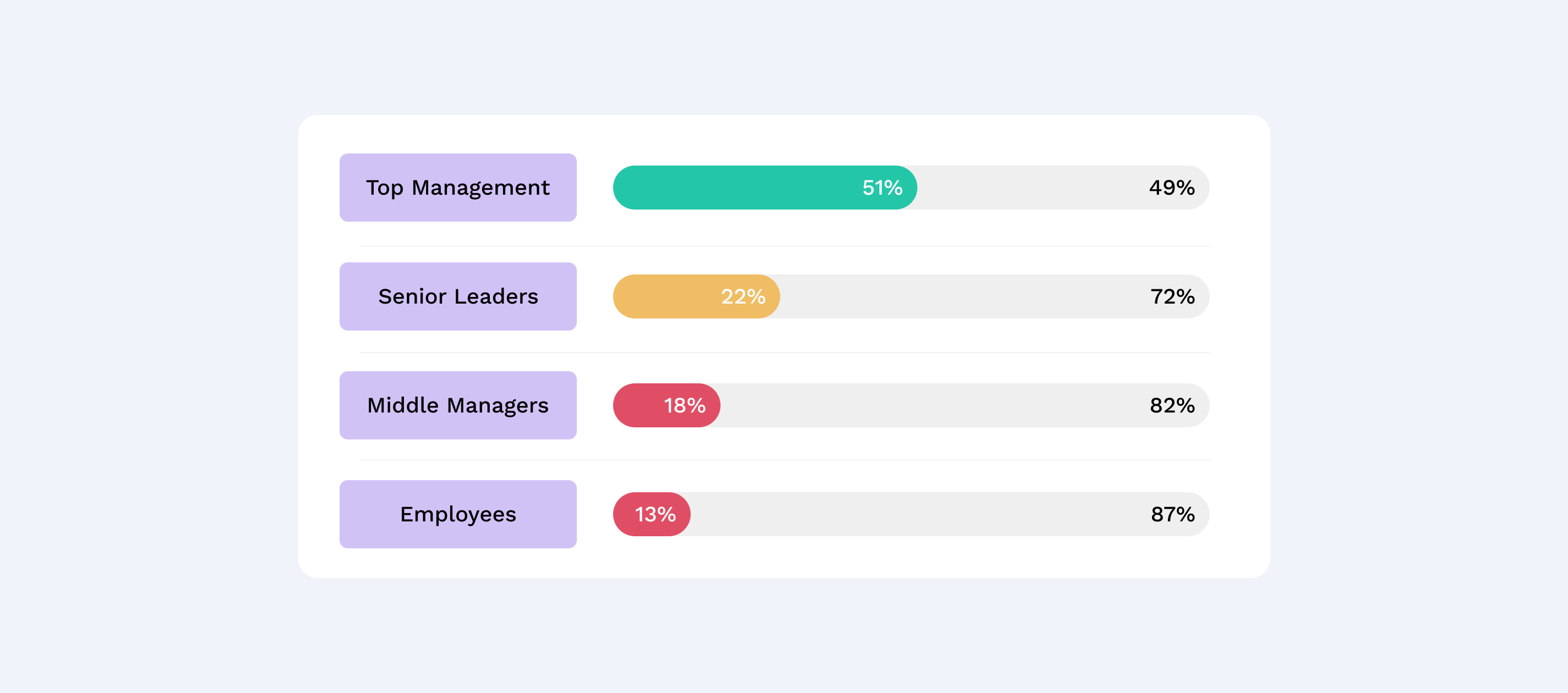
Transformational vs business as usual objectives
When we read about OKR in articles, books, or take courses, the recommendation often emphasizes that Objectives should be areas of movement. This approach suits startups or growth companies well, especially where most employees work on new projects and there is a high degree of process automation.
However, as more organizations adopt the OKR framework, it’s becoming evident that not all companies are structured in this way. Most employees, who also contribute to a company’s growth, work with already established processes, commonly referred to as “Business as Usual” or BAUs. In these organizations, OKR are equally valuable and applicable.
Read: All you need to know about the OKR framework
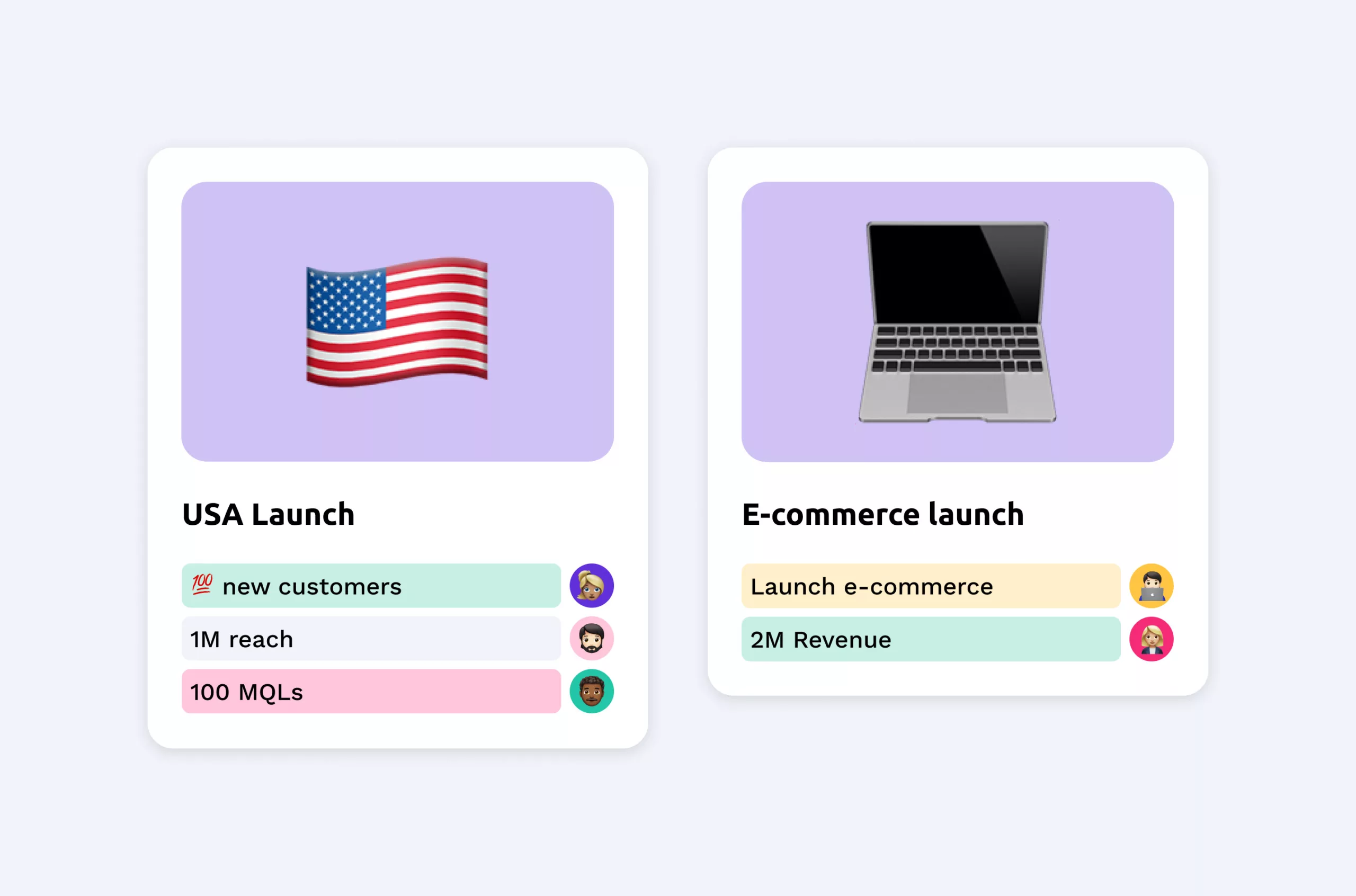
If the company leadership only highlights focus areas like ‘USA launch’ and ‘launch of e-commerce,’ as in the previous example, two defined project groups will likely emerge, each working on these areas and influencing the progress. However, the majority of all employees will not have any connection to the company’s OKR, and they will feel left out, not working on initiatives crucial for the organization.
This is a significant mistake and something you should avoid at all costs. In fact, it is business-critical to keep the operations running. Below are examples of BAUs (Business as Usual) that would include everyone in the company. You can call them focus areas to create inclusivity.
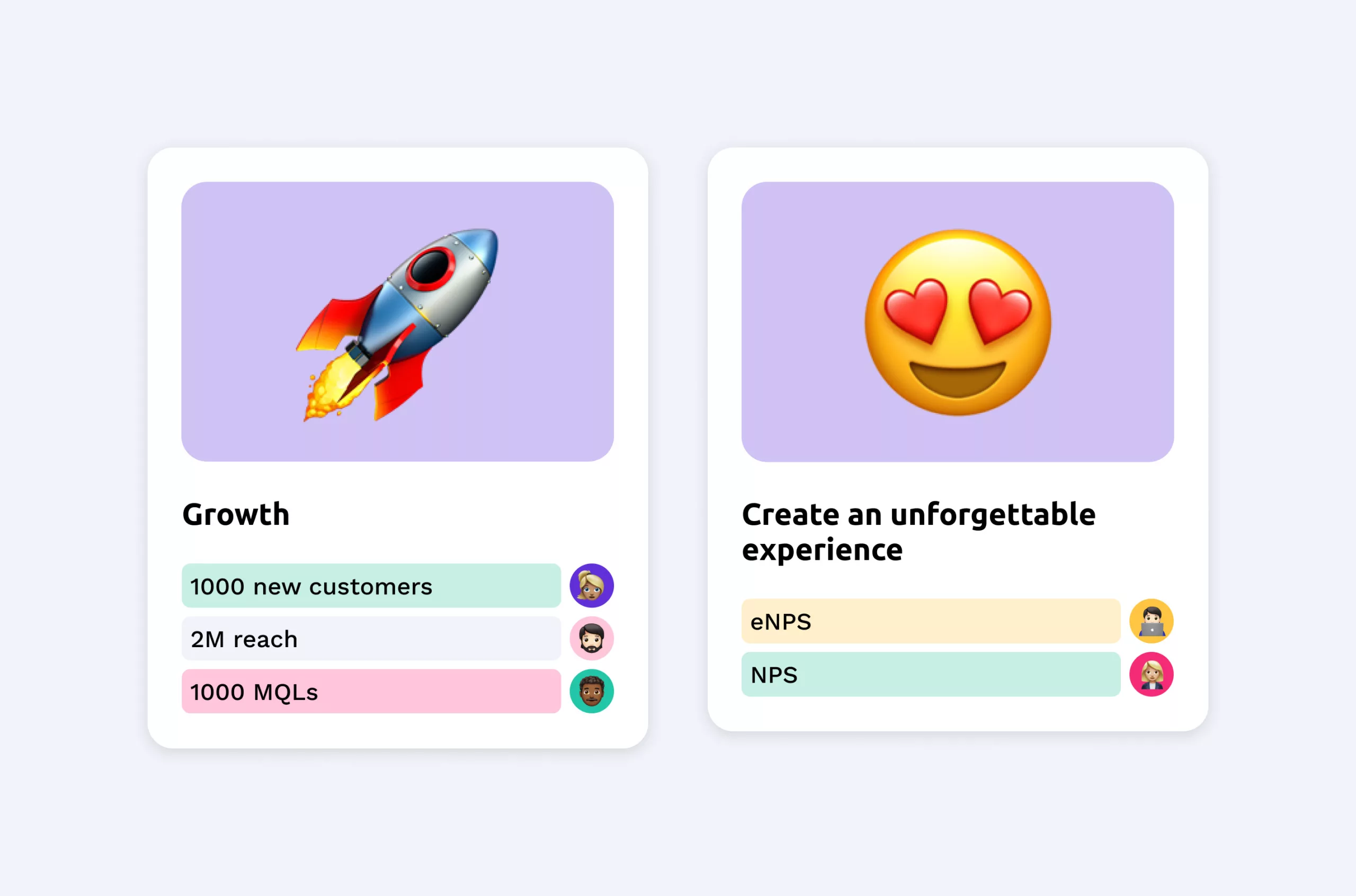
You need to find what works for your company
With that background, you need to find a balance that works for your company. Each management team, therefore, needs to decide how much energy you should put into the operation of existing business, growing existing business, and fundamentally changing the business. It’s about finding the optimal mix of what employees can handle to achieve maximum efficiency and output.
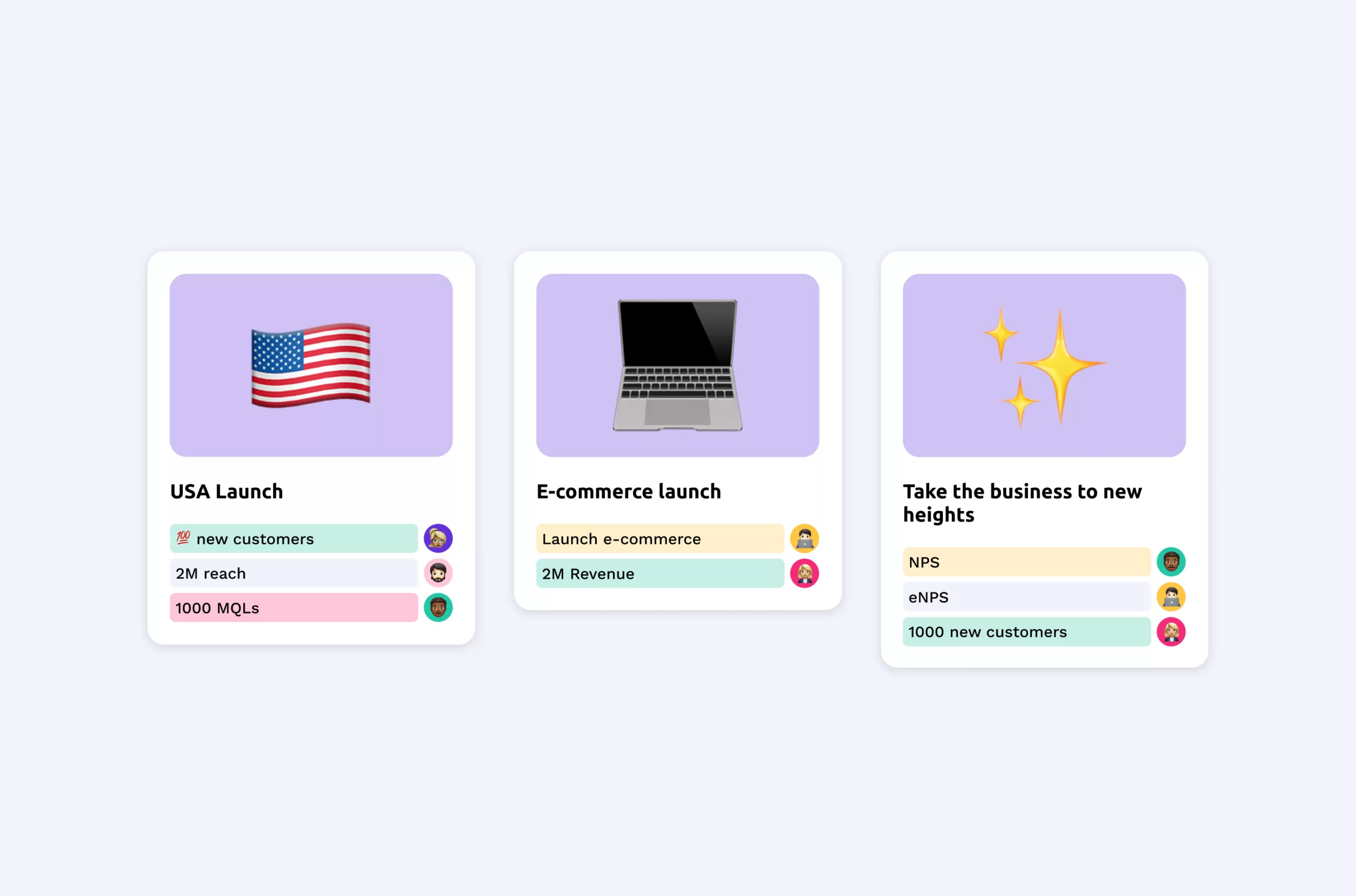
McKinsey has introduced something called ‘Strategy Horizons‘ that can be helpful when considering the balance between focus areas and areas of movement. Transformation is, of course, exciting, but it is BAUs that bring in the money and account for profitability here and now. Do not underestimate this; friction can arise in an organization that lacks balance in these horizons.
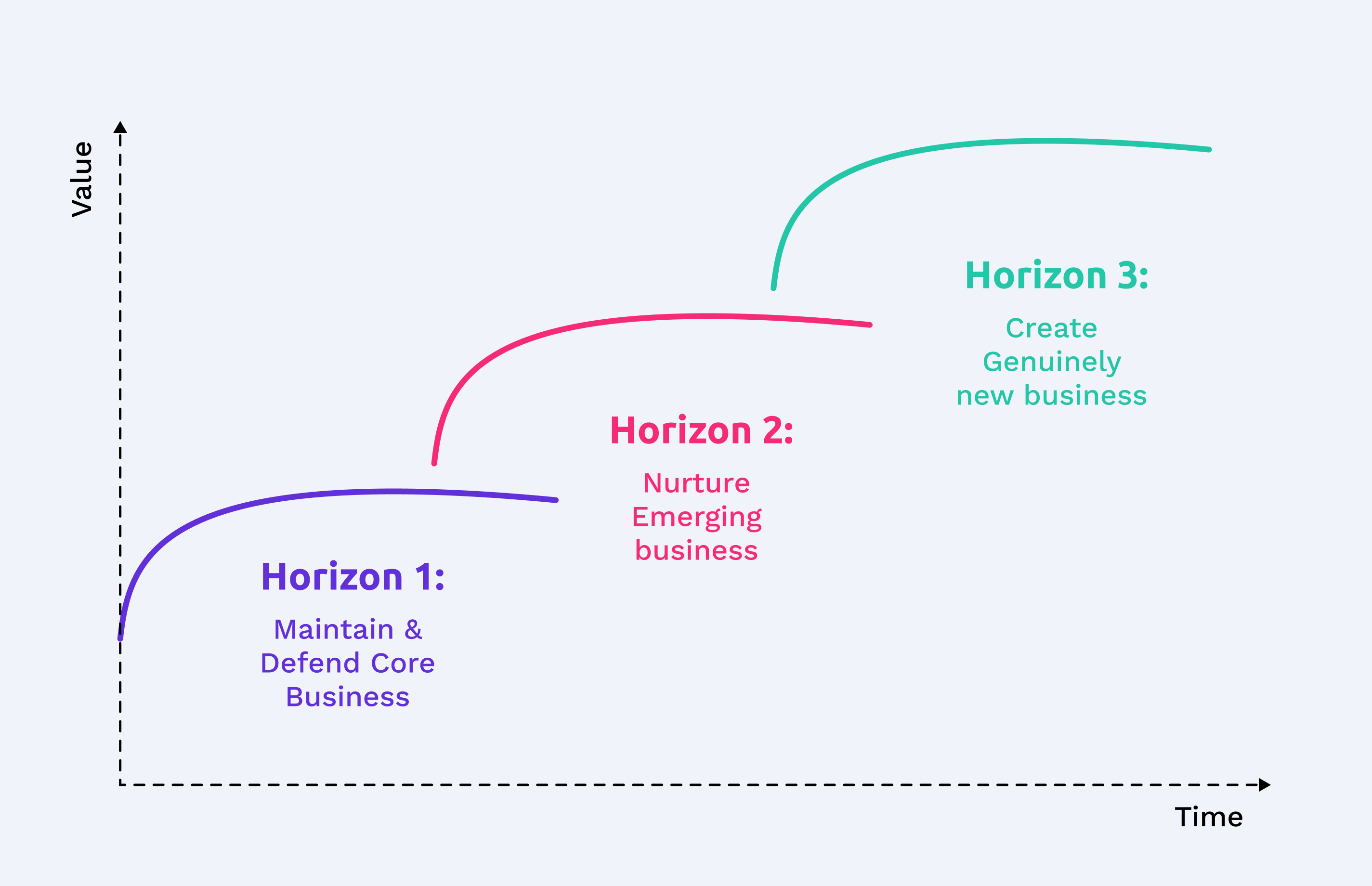
OKR Example: See how other companies have visualized their OKRs
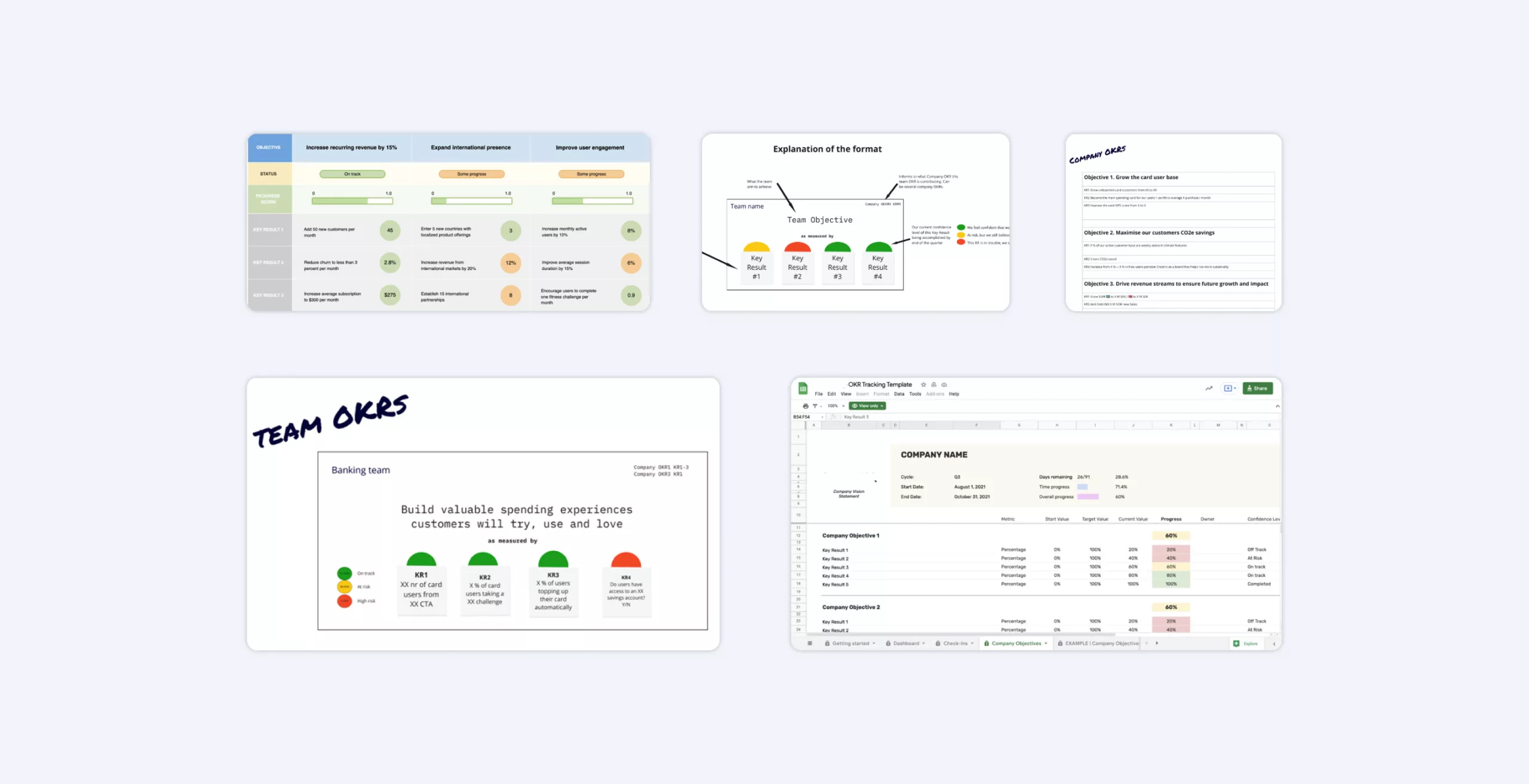
Check out our OKR examples guide for loads of company and team-specific OKR examples to spark some inspiration!
Key Results can be leading or lagging indicators
When measuring and striving for Key Results, understanding the distinction between leading and lagging indicators is crucial. These indicators provide important insights that enable informed decisions and adjustments along the way.

Leading Indicators: Paving the Way for Success
Leading indicators are proactive, representing factors and activities that can be influenced and controlled currently to achieve future goals. For example, to achieve growth in a B2B software company, one should focus on measuring the number of booked and conducted meetings to reach a specific sales target. Booked meetings are something every salesperson can influence on a daily basis and are a leading indicator to ultimately achieve sales goals.
Leading indicators empower individuals and teams to take control of initiatives that lead toward a goal. They offer real-time feedback, enabling quick adjustments and the ability to correct the course as needed. Measuring leading indicators fosters a proactive corporate culture where employees take ownership of their results.
Lagging indicators: Measures result
Lagging indicators measure the results of previously implemented actions. They offer feedback on whether the goals have been achieved but do not influence the achievement of these goals. An example: a summary of sales at the end of the quarter provides insights into past performance but does not drive future sales. While lagging indicators are crucial for evaluating results and compliance with long-term goals, relying solely on them can be limiting. Often, it’s too late to make meaningful changes based solely on lagging indicators. To maximize efficiency, organizations and individuals should use lagging indicators for evaluation and learning rather than as the primary driver for change.
Balancing leading and lagging indicators
A common pitfall is the excessive emphasis on lagging indicators, which can hinder proactive decision-making and adaptability. A better approach is to find a balance between leading and lagging indicators; companies must measure both.
Consider the balance between leading and lagging indicators when setting your OKR (Objectives and Key Results). It’s important that teams and individuals can work proactively without depending on other teams or individuals to move forward swiftly.
Actions that take you to your goals
After defining company-level OKR, you can begin planning the actions required to achieve those goals. Actions break down large goals into smaller, manageable parts and specify the specific steps for achieving Key Results. Often, companies already have important projects underway that can link to OKR. It is also an excellent opportunity to discard projects that consume too much time. Do fewer things, but with a greater impact!
Your actions need more details, and now it may be crucial to use a tool to orchestrate all actions leading to your goals, ensuring no important tasks are overlooked. Actions should include an owner, a team, a description of what needs achievement, documentation, a deadline, and a status. Ideally, you can break down an action into sub-actions. Remember, actions ultimately lead you to your goals, and it’s vital to create a well-oiled machine that rewards initiative.
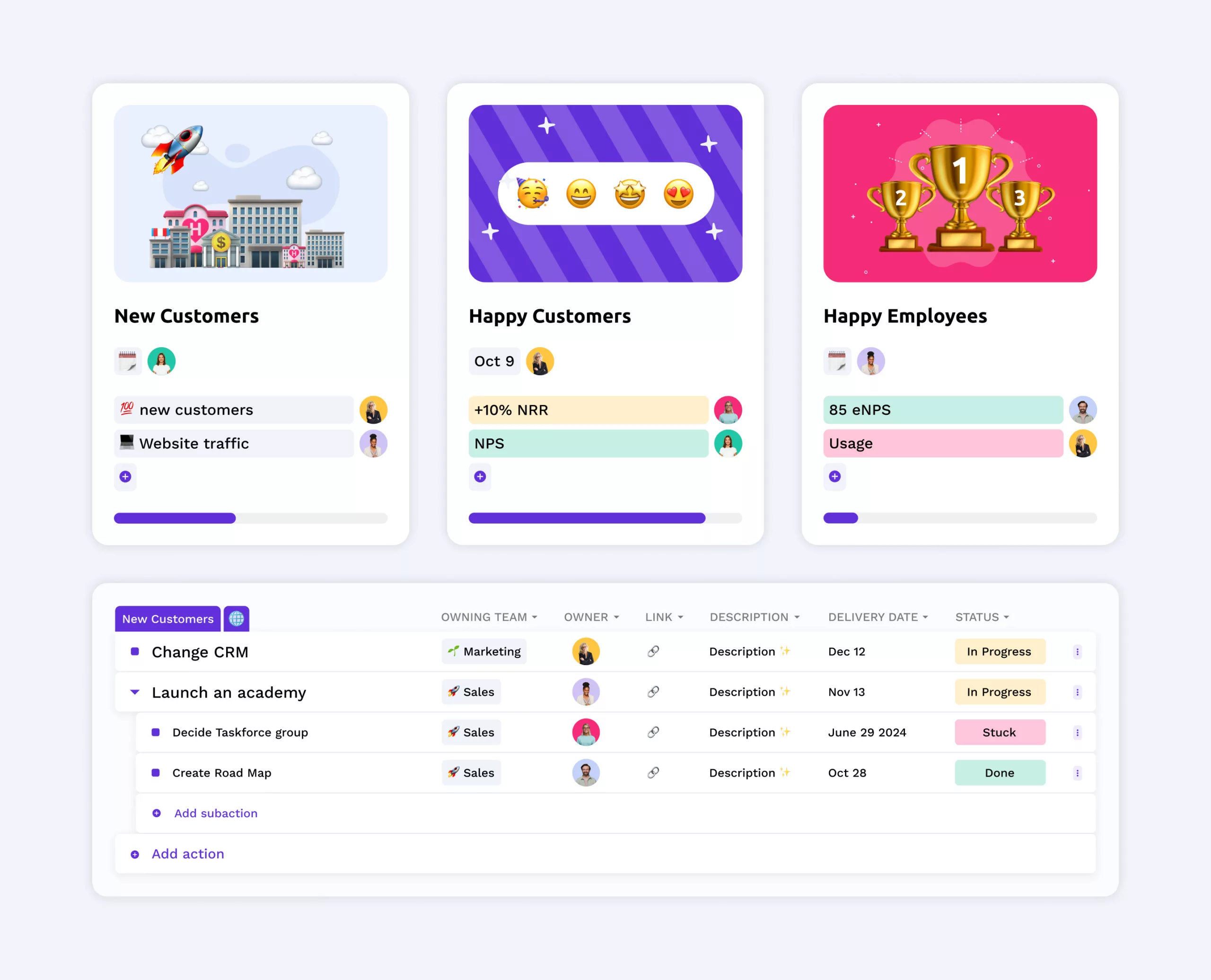
The importance of not having too many objectives
When your partner asks you to buy three things from the store and then adds a fourth, it becomes challenging to remember the extra item. This scenario reflects the importance of simplicity in goal communication within companies. By keeping goals simple and limiting their number, it is more likely that employees will remember and prioritize them effectively. A mistake many companies make with OKR is setting up too many Objectives. A good rule of thumb is not to have more than three Objectives at the company level.
1️⃣ Eliminate Confusion: Focusing on a maximum of three goals ensures clarity, making it easier for employees to synchronize initiatives and identify the most critical priorities. Simplicity is key to eliminating confusion.
2️⃣ Efficient Resource Allocation: With only three Objectives to manage and understand, resource allocation becomes more effective. It allows for a better distribution of limited resources such as time, finances, and expertise, directing them toward the most significant goals.
3️⃣ Smoother Reporting: Reporting also becomes more streamlined when there are clear owners for each Objective and Key Results. Aligning updates on the company’s progress with this structure makes it more understandable how the company is performing in relation to its goals.
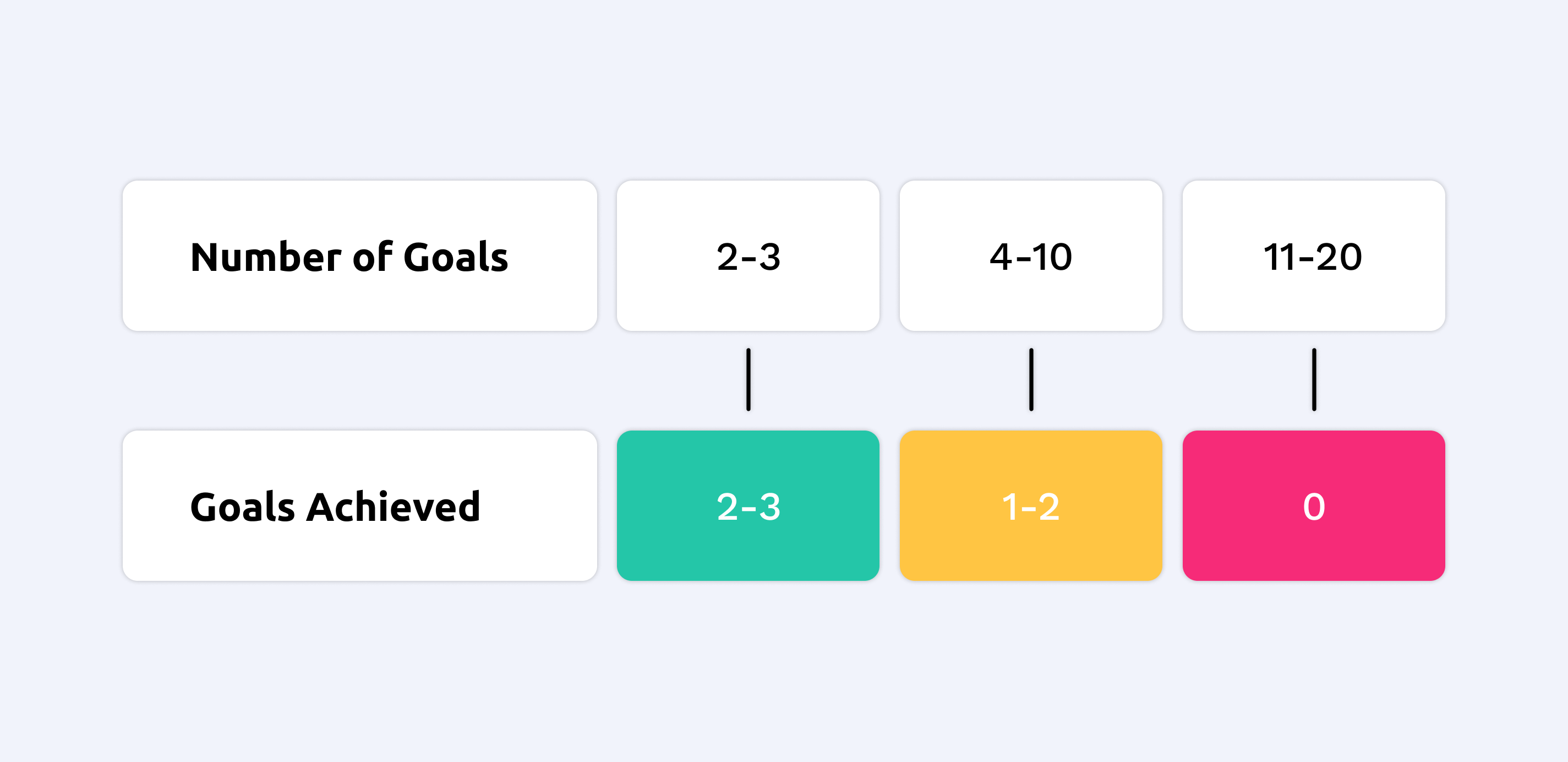
Teams and employees will not sit idle just because you haven’t set more goals. They will undoubtedly establish goals at both the team and individual levels that align with the company’s objectives and work ambitiously towards them. Dare to focus on fewer things and strive for greater impact instead.
Different choices must be made
Let’s play with the idea that you choose the following OKR for your company. When you communicate to the various departments that these are the areas the company will focus on, along with suggestions for Key Results, some departments may want to move certain Key Results to the team level instead of reporting them at the company level.

One option could therefore be to move Objectives and Key Results set at the company level down to different teams and to further refine the company-level OKR. Instead of specifying growth targets at the company level, it might be better to let teams define more specific and clear OKR.
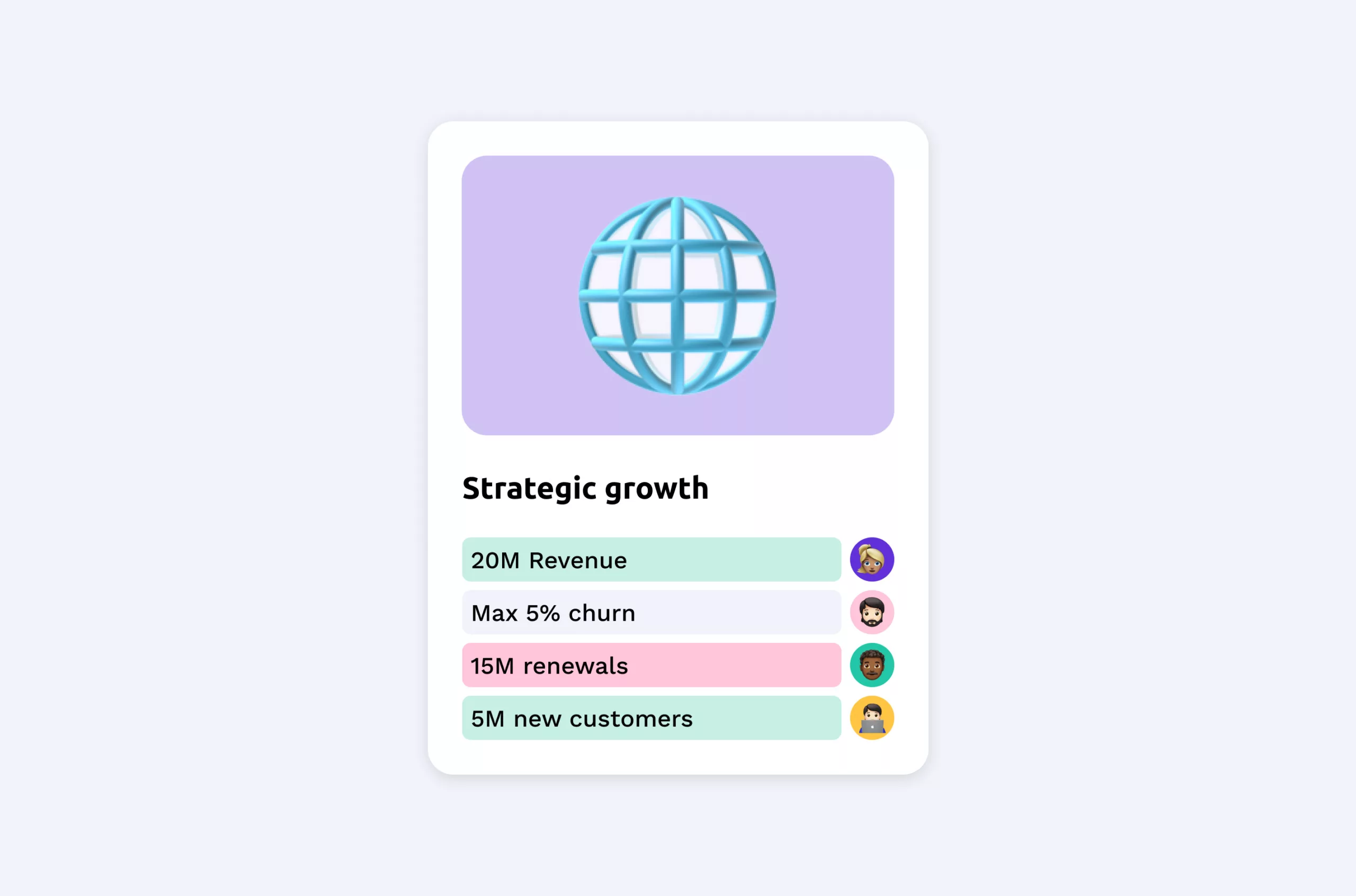
If you don’t prefer the approach mentioned earlier, where you give teams complete freedom to set their own OKR, you could instead request that each team exclusively defines actions related to the company’s OKR and specify which Key Results the teams will support with their actions. It might look something like this:

Set stretch goals
Using “stretch goals” in conjunction with OKR is a common practice. This goal-setting method differs from setting realistic goals, and there are several important reasons for this. It’s perfectly okay not to achieve all the goals you set. In fact, if you’ve reached all your set goals, you’ve probably made it too easy for yourself.
Promoting High Ambitions
Firstly, it signals to everyone that you have high ambitions. It encourages teams and individuals to think beyond their current capabilities and strive to achieve what may have seemed impossible before. This leads to increased innovation and creativity.
Enhancing Motivation and Engagement
Secondly, it boosts the motivation and engagement of those working to achieve the goals. The goals serve as a source of inspiration, motivating employees to do their best and dedicate themselves to achieving them. “Stretch goals” also promote learning and personal development. When people aim for greater challenges, they acquire new skills and encounter new problems they might not have faced otherwise.
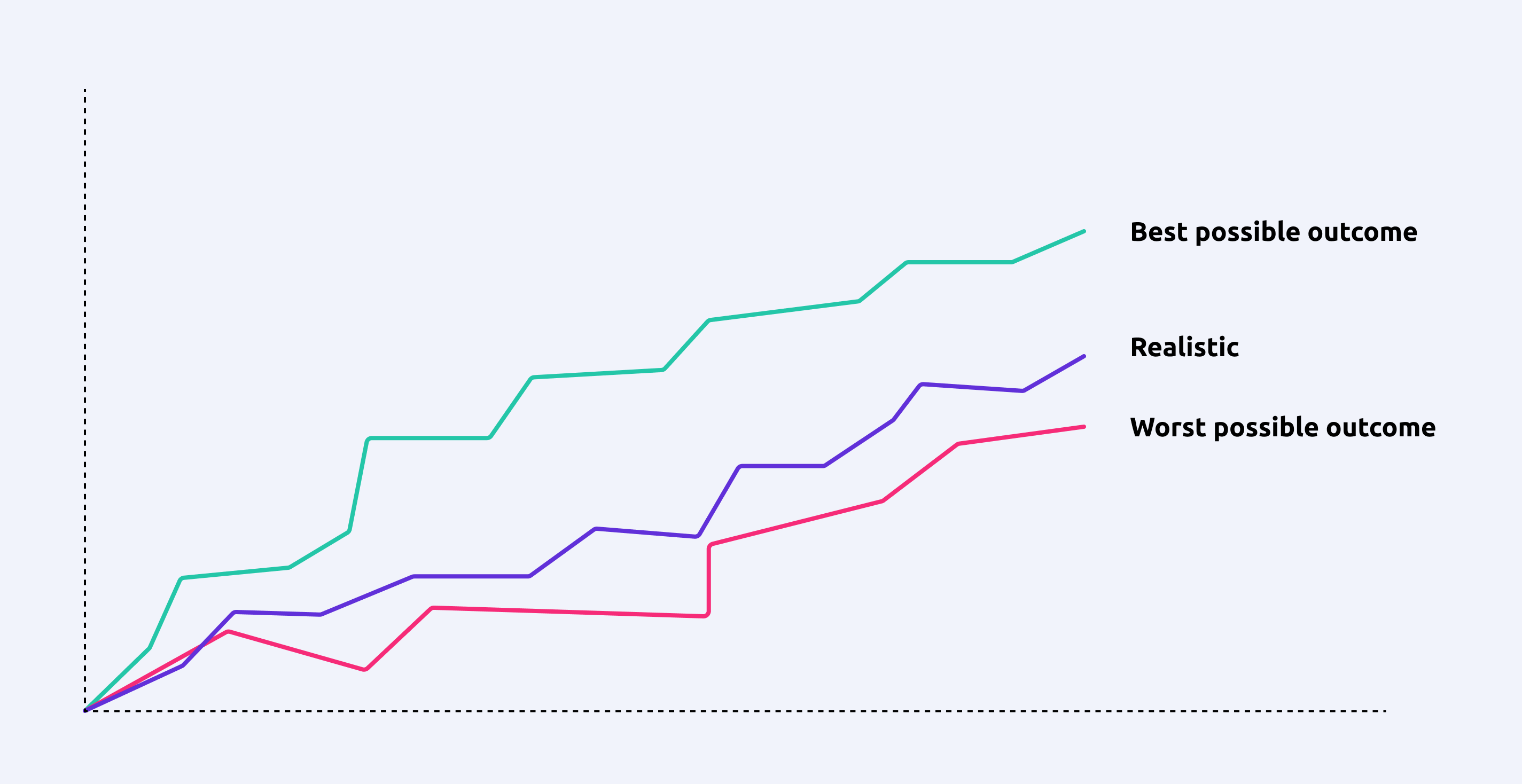
This approach fosters a culture that encourages employees to develop both themselves and the organization. Moreover, it helps prevent the risk of mediocre performance. If goals are easy to achieve, there’s a risk that employees will settle for just meeting the minimum requirements.
Goals act as a catalyst for innovation and change. When organizations encourage their teams to think big and break new ground, an environment is created where new ideas and methods are encouraged. This can lead to significant progress and increased competitiveness.
Setting “stretch goals” makes organizations more flexible and adaptable. If the goals are not fully achieved, it’s still possible to have reached a higher level of performance than if more realistic goals had been set. Additionally, it may be necessary to adjust goals during the year depending on changing circumstances, and “stretch goals” provide room for this flexibility.
The importance of the CEO being proactive
The implementation of OKR is a crucial process that requires significant commitment, endurance, and guidance from the top management level of the organization. Typically, it is the CEO and the executive team who should drive the initiative to ensure the effective introduction of OKR. In cases where the CEO is not the primary driving force behind the OKR implementation, other key individuals such as HR (Human Resources), CFO (Chief Financial Officer), CSO (Chief Strategy Officer), or COO (Chief Operating Officer) can play a vital role as owners of OKR.
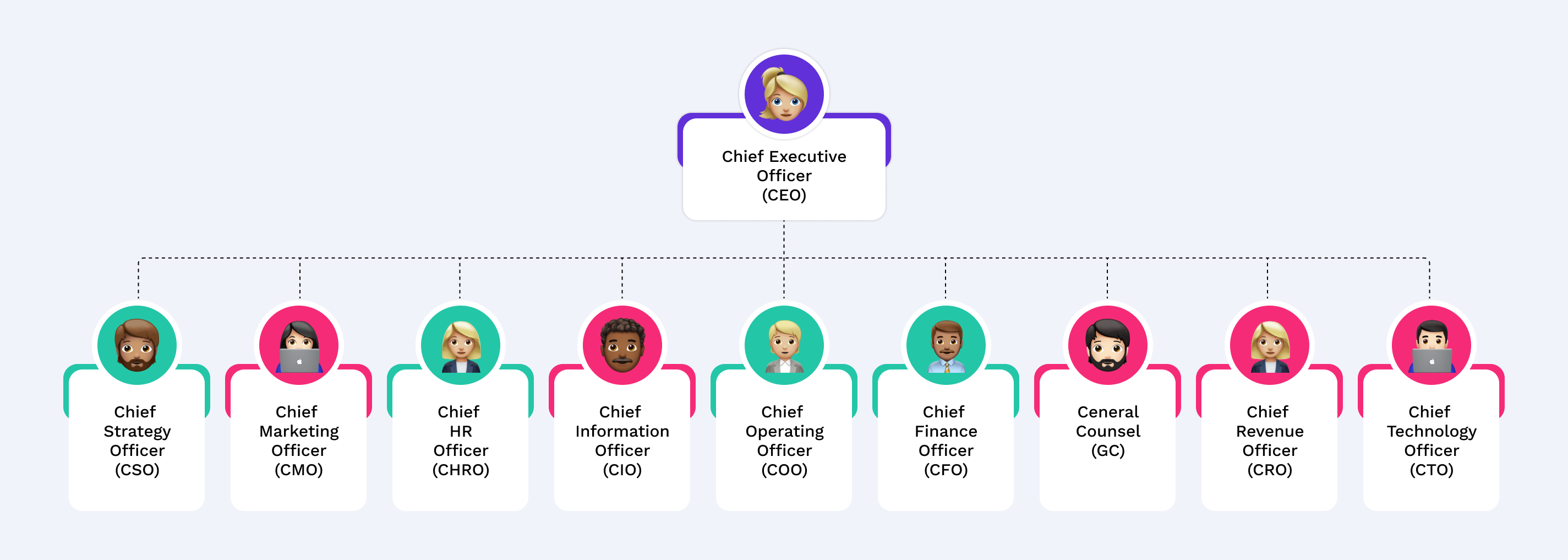
So, why is it important to get these roles on board?
1️⃣ Strategic Alignment
CEOs, CFOs, Chief Strategy Officers, and Chief Operating Officers often have a deep understanding of the organization’s overall strategy and key elements of business operations. Involving key roles in the OKR process ensures alignment of OKR with the organization’s overarching goals and vision. They can focus OKR strategically on areas that need the most attention and investment.
2️⃣ Financial Insight
CFOs are responsible for managing the organization’s finances and resources. A CFO is also the owner of the budget. By involving the CFO in the OKR implementation, one can ensure that goals are realistic and resources are allocated efficiently. The CFO can assist in setting realistic key results and monitoring financial goals to ensure that OKR are achievable and financially sustainable.
3️⃣ Operational Expertise
Chief Operating Officers are typically responsible for driving the organization’s day-to-day operations. By including the COO in the OKR process, you ensure that the operational aspects of the goals are considered and that they are practically achievable. The COO can provide insights into how the organization can optimize its processes to achieve OKR more effectively.
4️⃣ People-Centric Approach
The HR department plays a crucial role in supporting and developing the organization’s personnel. Involving HR in the OKR process can help ensure that goals are aligned with employees’ skills and developmental needs. HR can also support the communication and training required to successfully implement OKR.
Determine OKR Frequency
The time horizon or frequency for running OKR is a crucial decision point for every company. It’s important to tailor it to the company’s needs, size, and corporate culture. Here are some considerations when choosing a time horizon for OKR:
📆 Annual OKR
Running OKR on an annual basis often suits larger companies with more complex and long-term strategies. It allows for in-depth planning, implementation, and evaluation. Annual OKR may be suitable when goals are stable and do not change frequently.
🔄 Biannual OKR
In regions like the Nordic countries, where summer vacations are long, biannual OKR might be suitable. It provides an opportunity to maintain continuity despite vacations and may be easier to sustain.
⏰ Quarterly OKR
Quarterly OKR are suitable for startups and companies undergoing significant changes that want to quickly shift focus if needed. A higher frequency means more work and potentially more internal meetings, etc. Go with this option if you have the ability to have rapid iterations.
🔀 Hybrid Approach
Companies may also consider combining different time horizons for different levels of the organization. For example, the company could have annual OKR while teams use quarterly OKR. A company could also have annual Objectives but report Key Results on a quarterly basis. Regardless of the time horizon, continuity and feedback are central.
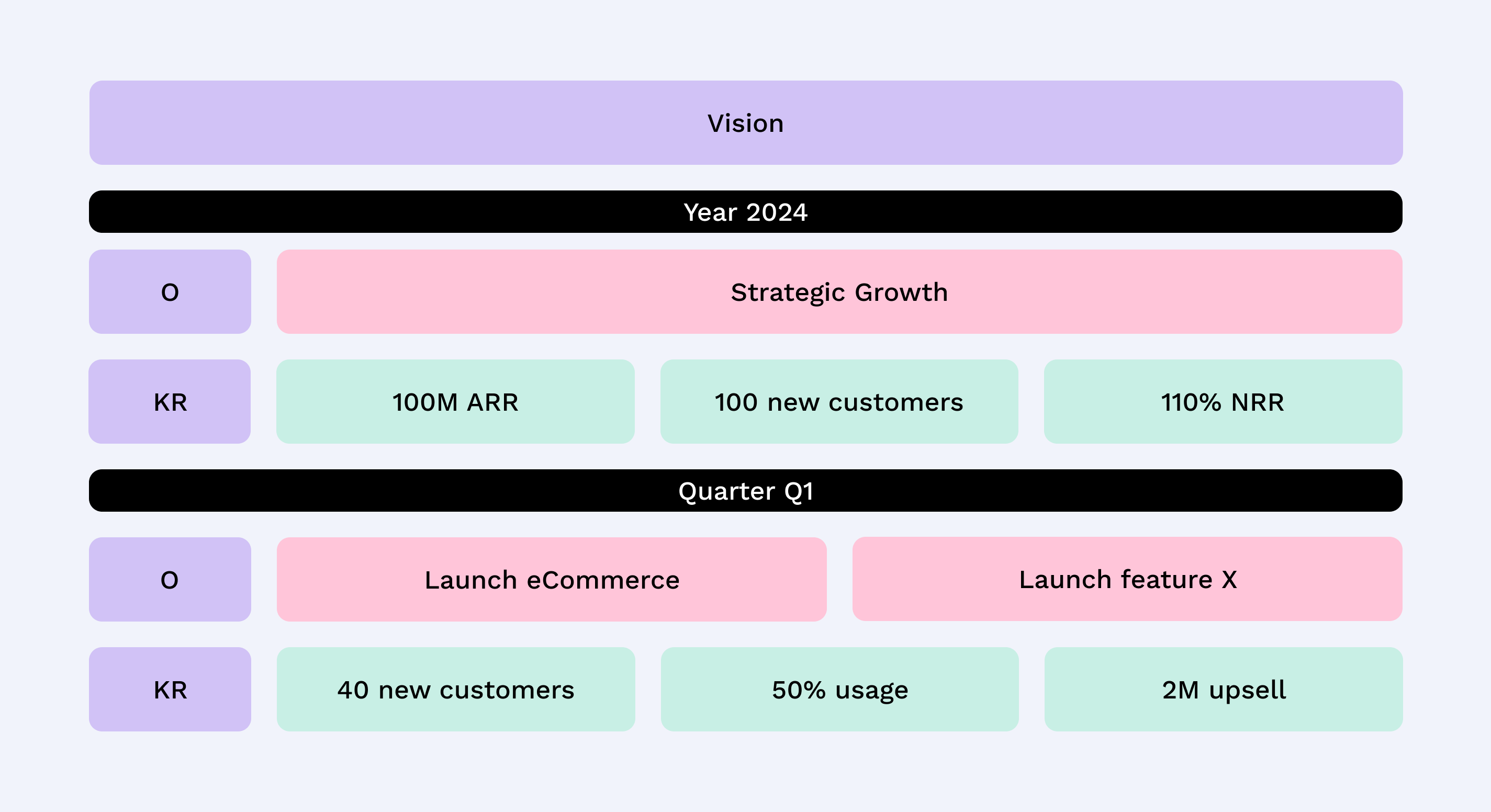
Regular reviews and adjustments of OKR should be an integrated part of the process. It’s also crucial to communicate clearly about the time horizon and goals so that everyone in the organization is aware of the right time for evaluation and how they can contribute to success.
A holistic approach to OKR
For an effective implementation of OKR in a company, it is crucial to understand that OKR are not an isolated process but rather part of a larger process. It requires cohesive strategic planning and coordination within the organization. Firstly, once a year, it is important to review the company’s vision and long-term goals and strategy. This forms the basis for setting OKR. It offers a chance to contemplate the company’s long-term direction and desired evolution.
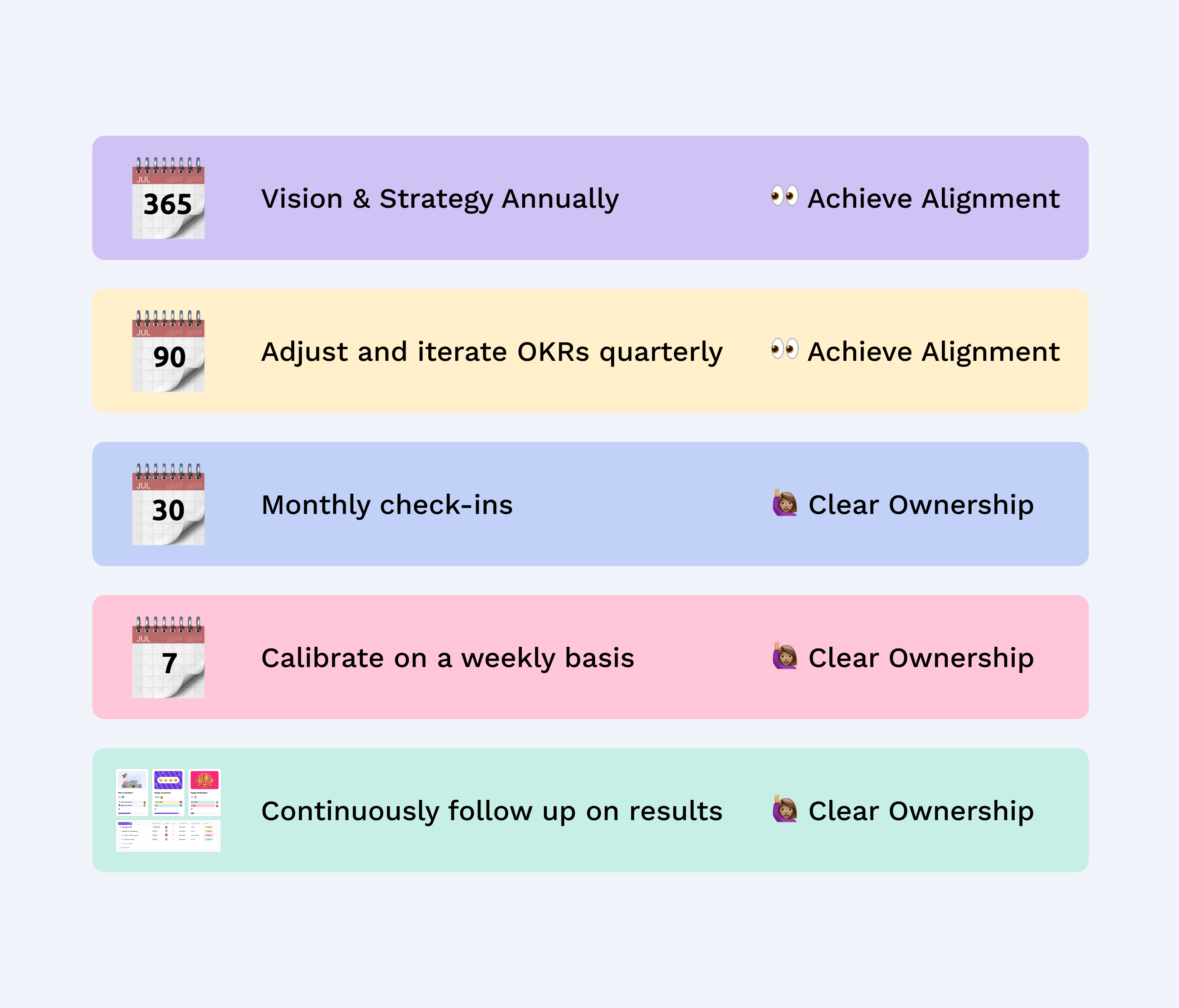
To ensure that OKR are part of the overall strategy, a business plan can be used as the foundation for OKR work. This means having a clear plan for how the company will achieve its goals and how OKR fit into this plan. The budgeting process is also a crucial part of this context. There are two main approaches to managing this: either in parallel with OKR, where the CFO is responsible for both processes, or by having another owner in the executive team who ensures that OKR are a natural part of the whole.
Various processes are constantly taking place at the company level, team level, and individual level within organizations at different frequencies, and it’s crucial to bring everything together. The risk is that you may overload your organization if you don’t think of OKR as part of a whole. You need to have a holistic approach.
OKR owner
The person owning the OKR process in your company should act as a facilitator for team OKR. The owner should distribute an OKR template internally within the organization on how to structure team OKR so that all departments work in the same format. As mentioned earlier, this role should ideally be part of the executive team to ensure strategic alignment of OKR with the company’s overall vision. The owner will ensure regular review of OKR at executive team meetings. The OKR owner is responsible for coordinating OKR to fit into the overall company context and ensuring the organization can handle the process.

Appoint a working group
A key step in OKR implementation is appointing a working group led by the OKR owner. This group is central to the process, playing a vital role in ensuring successful adoption of OKR across the organization. The working group consists of key individuals who may be senior executives, CFOs, CEOs, COOs, or CSOs. Their commitment and participation in the working group signal the importance of OKR at the highest level in the organization.
The working group should also represent internal champions and employees without leadership responsibilities. The group is responsible for initiating and driving the OKR process throughout the organization. In this group, it’s crucial to have inspirers and super users who understand and are passionate about the OKR framework.
These individuals serve as role models and inspire the rest of the organization to embrace OKR. They understand the benefits of OKR and can communicate them in a way that inspires and motivates others.
The working group is responsible for several key functions, including:
Launch: Effectively rolling out OKR, involving clear communication of their purpose and benefits, plus guidance and training.
Action Follow-up: Ensuring that OKR translate into concrete actions and progress is monitored regularly.
Communication: Establishing clear channels to ensure awareness of OKR, their purpose, and support for organizational goals.
Decision-Making: Having the authority to make decisions and make necessary adjustments to ensure that OKR are relevant and effective.
This working group serves as a link between top management and other parts of the organization, helping to facilitate a smooth transition to OKR. By ensuring that OKR are understood, accepted, and followed at all levels of the organization, the working group can be crucial to achieving success with OKR as an effective tool for strategic planning and implementation.
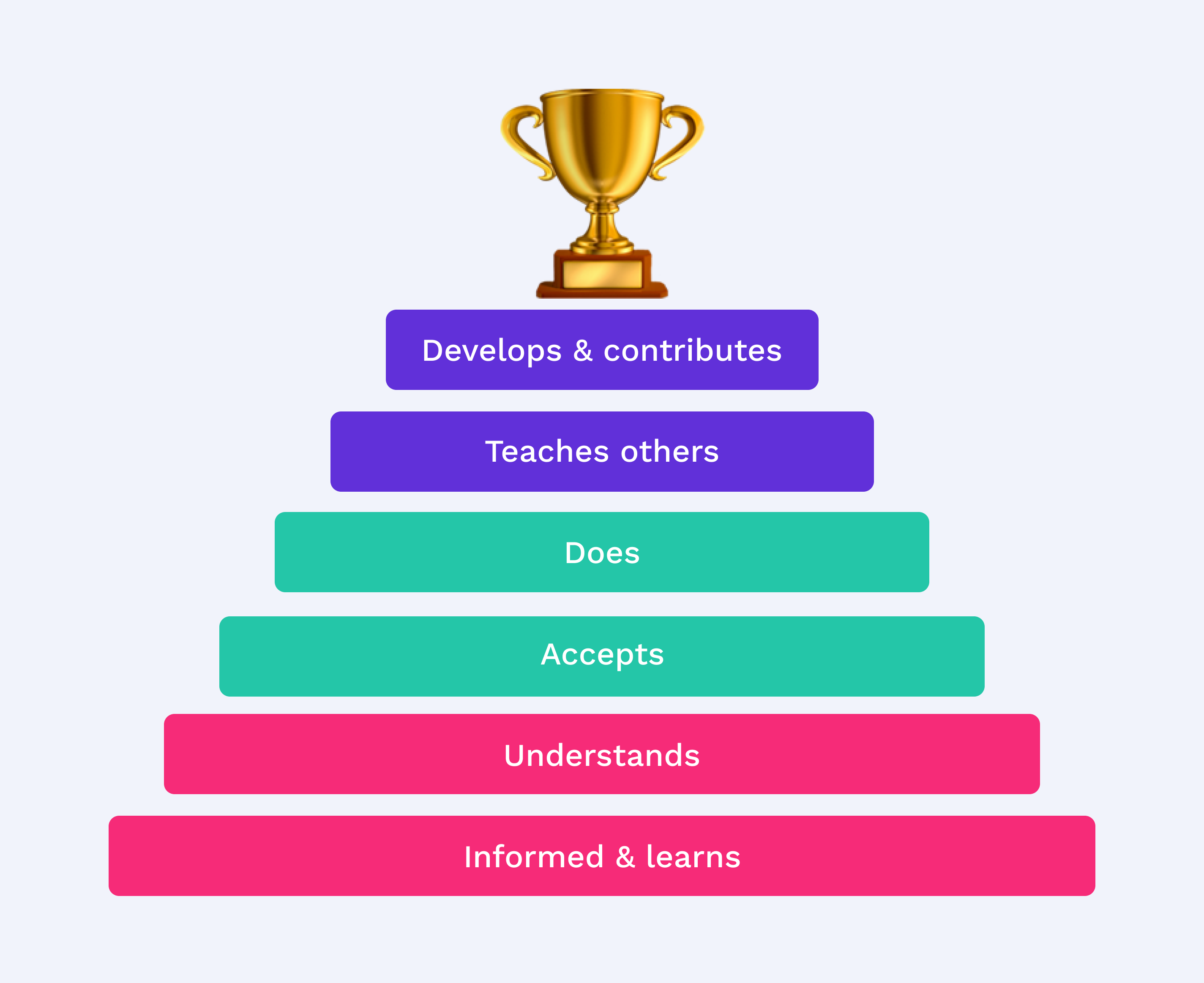
Include the teams and individuals
As mentioned earlier, OKR is a framework that promotes transparency and inclusion, ensuring everyone is engaged in shared goals.
When teams understand the leadership’s overarching goals, it empowers them to create their own objectives. It may happen that teams do not have the capacity or responsibility to support all the established OKR. It is entirely acceptable that they may choose only one goal to focus on. Encourage teams to have complete autonomy in formulating their OKR. However, it’s helpful to provide a structured OKR template or guidelines to facilitate communication between teams and the OKR manager. This creates a good balance between freedom and coordination, which is crucial to ensure that efforts are directed towards the most strategic goals.
Read: The power of setting goals that employees are enthusiastic about.

Trust leads to success
In today’s modern and hybrid work environment, we cannot micromanage employees and attempt to monitor every step they take. Instead, trust is at the core of the OKR methodology, and it is what will lead us to success.
Teams and employees are the ones with the best overview of their work and how it contributes to the business. Here’s an example: You’re part of the leadership group, and there’s a web developer in the marketing team. Who is the most suitable person to design the key performance indicators (KPIs) for the web developer? The answer is likely the web developer themselves, in collaboration with their team and their immediate manager. The web developer is an expert in their field and knows that “Page speed” is crucial for ranking high on search engines, an insight few in the leadership group may have. The web developer understands the technical aspects that need optimization to increase speed. These actions will contribute to lead generation, a central task for the marketing department, ultimately driving growth.
To successfully achieve goals, it is important not to dictate what teams should do. Attempting to micromanage their work not only lacks inspiration but may also divert their focus to the wrong areas. Instead, start by building a foundation of mutual trust. When that trust is in place, employees will feel motivated to take initiative and ownership of their goals.
Visualize OKR and get competitive
Visualisering of OKR is crucial to create increased transparency, engagement, and competition within the organization. It provides a clear picture of the current status at the company, team, and individual levels. It should also evoke a sense of responsibility and competitive spirit. By using color codes such as red for “alert,” green for “trending well towards the goal,” and yellow for “work in progress,” you can, in a few seconds, see where you stand in relation to your goals.
This quick overview makes it easy to prioritize and focus on areas that need the most attention. For example, you can use corporate chat platforms such as Slack or Teams for real-time updates. This recurring visualization should occur at least weekly and should be an integral part of meetings within the organization. By creating a structured process for when and how OKR are presented, you will foster a culture of continuous monitoring and accountability. Visualizing OKR is a powerful motivator and competitive factor. It provides a clear indication of performance and inspires employees to strive to “trend green” and avoid the red alert.
Establish OKR check in routines and block time
Check in routines are of crucial importance when working with OKR. This to ensure that goals are achieved and to keep the entire organization synchronized. Here is an example of how these check in routines can look at the company level, team level, and individual level, along with a concrete example of a checkin schedule.
🌐 Company Level OKR
At the company level, a monthly check in should be a standard routine. During these meetings, the leadership team can evaluate progress toward the top-level goals and identify any obstacles. It is also a time to ensure that the company as a whole is on the right track. For example, the company may have a goal to increase sales to existing customers by 10 percent during the quarter. During monthly check ins, the team can analyze how this goal is progressing and make decisions about adjustments if needed.
👥 Team Level OKR
At the team level, a weekly check in should be in place. The team leader and team members can come together to discuss the week’s progress, identify any bottlenecks, and make decisions about actions. Each team likely already has a routine for their meetings, so make sure that OKR check ins become part of an already established routine.
😄 Individual OKR
Check-ins should be daily or weekly, tailored to the company’s culture and needs. Here, the aim is for the daily to-do’s of an employee to bring them closer to their goals. Each individual can review their own OKR, reflect on progress, and identify the activities required to achieve the goals. For example, a developer may have an individual OKR to complete a new feature within a specific timeframe. Daily check-ins help confirm if a person is on track and allow for prompt addressing of challenges.
⏱️ Example of a specific OKR checkin schedule:
- Monthly Company Checkin: First week of every month
- Weekly Team Checkin: Mondays at 10:00 AM
- Individual Checkin: Every morning at the start of the workday
For teams already using agile methods, like two-week sprints, integrating OKR into their workflow is even more crucial. You don’t want to create an OKR process as an isolated island. Instead, the implementation of OKR should become a natural part of the whole. It’s about adapting the check-in routines to the existing internal meetings and the overall communication plan.

Launch OKR plan
A meticulously planned internal launch of OKR is crucial to ensure that all employees understand the purpose and implementation of OKR. A launch plan should address why OKR are being introduced, how they will be used, and what is expected from teams and individuals. Additionally, it should provide necessary information and support throughout the entire process.
Launch Month (Month 1):
- Week 1-2: Form a project group responsible for launching OKR. Identify key individuals to serve as ambassadors for OKR in various departments.
- Week 2-3: Develop an FAQ documentation that answers common questions about OKR and a wide range of usage scenarios.
- Week 3-4: Produce training materials, including instructional videos and e-books providing an overview of the OKR process and its benefits.
- Week 4: Organize a webinar or presentation for leaders and the project group to explain the introduction and use of OKR.
Implementation Month (Month 2):
- Week 1: Launch a Teams channel and a Slack channel for OKR discussions and support.
- Week 2-3: Begin internal training for key individuals and OKR ambassadors on how to set up and follow OKR.
- Week 4: Publish continuous information on platforms like the intranet with videos and documentation describing the process.
Implementation Month (Month 3):
- Week 1-2: Initiate check-in routines by integrating OKR into existing meetings.
- Week 3-4: Continue ongoing communication.
Follow-up Month (Month 4):
- Week 1-2: Begin tracking how OKR are being used and reinforce positive progress.
- Week 3-4: Continue educational efforts and provide necessary documentation and support.
Ongoing: Update OKR on office TV screens and consistently communicate the organization’s progress and achievements in relation to the goals.
Following a launch schedule for OKR ensures a structured, goal-focused strategy, keeping all employees informed and engaged. This will make the transition to OKR smooth and successful, promoting a strong corporate culture focused on achievement.
Read: 6 important steps to follow in your goal-setting process.
Get people excited
Semantics play a crucial role in creating a positive attitude towards change. Avoid terms like ‘transformation’ and ‘change management’; focus on ‘improvement’ for a positive, forward-looking atmosphere. It’s not just about word choice. It also involves explaining why you want to implement OKR and what you hope to achieve. Highlight other companies that have succeeded in creating clarity and alignment using OKR. Companies achieving good results with OKR boost confidence and motivate employees to use them for ongoing improvement. Rather than a traditional ‘change process’ that often carries a negative connotation.
Different groups of employees
Within organizations, there are three main groups of employees with different levels of engagement. First are the ‘Actively Disengaged’ (11% global average, per Gallup), dissatisfied with their workplace and often seeking new jobs. Their lack of engagement can negatively impact the company’s performance. Next, the ‘Passive’ group (75% global average, per Gallup) may lack enthusiasm but still show up and try to perform. Finally, we have the ‘Engaged’ (14 percent is the global average according to Gallup). They enjoy their tasks, perform well, and act as a driving force for innovation and progress within the organization.
Different personality types
In addition to these groups, there are also different personality types that affect how employees respond to changes. This includes innovators who are open to new ideas and technologies. Visionaries with a strong future vision. Pragmatists who focus on practical solutions. Conservatives who are reluctant to change established methods, and skeptics who have doubts about the benefits of change. It is important to understand that people take different times to adapt to new methods and frameworks, such as OKR.
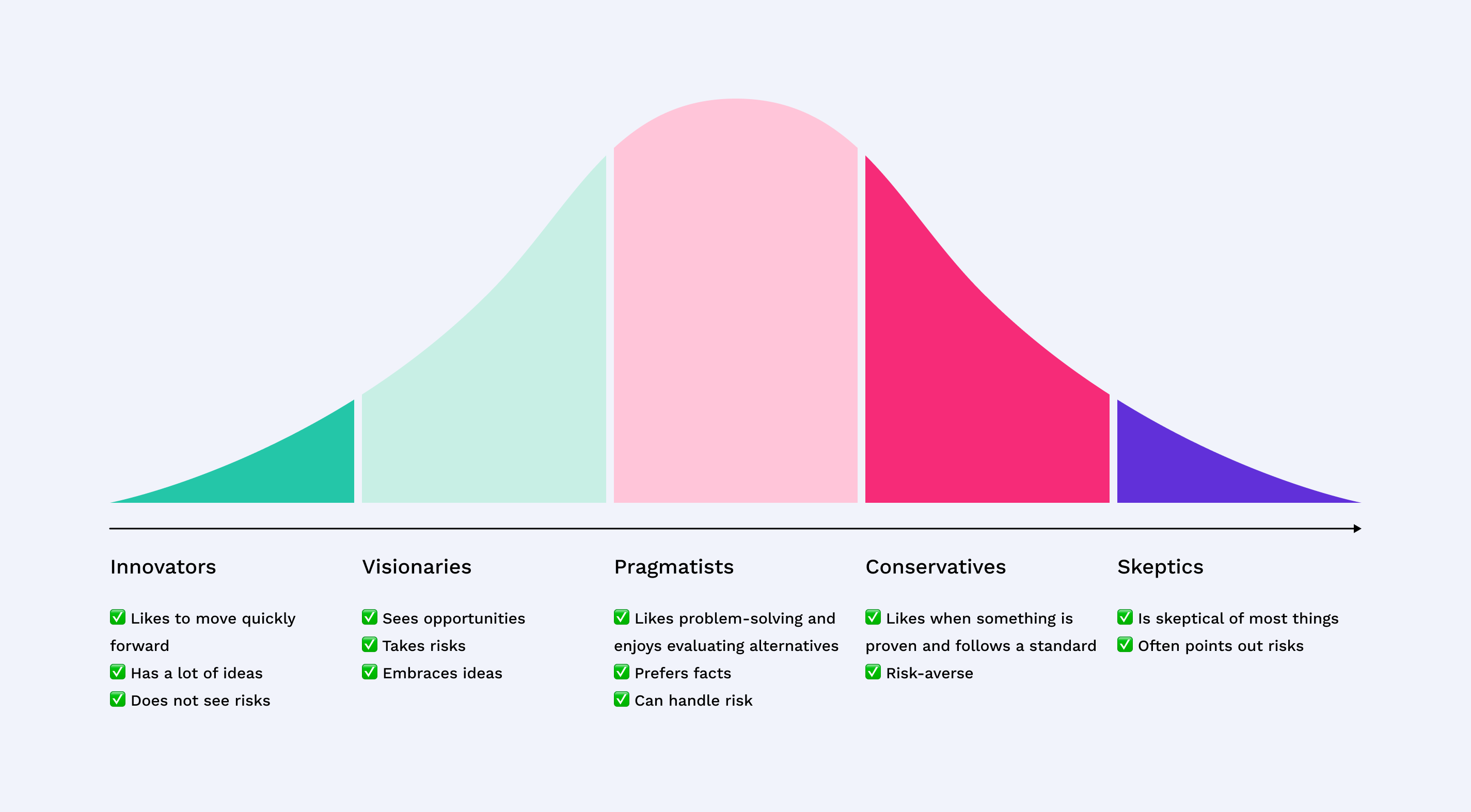
For example, if the company has measured engagement levels (eNPS) and it is clear that the company’s culture is in a negative spiral, it may be wise to consider which projects should be prioritized. It may also be the perfect time to implement OKR, as the survey reveals that employees do not have clear goals and the company’s direction is unclear. Alternatively, it may be that recently implemented extensive organizational changes have affected the culture, and in that case, it may be more appropriate to focus on initiatives that promote closer collaboration and cohesion among employees. Reflect carefully on the timing when implementing OKR to ensure the best possible conditions for a successful launch of this framework.
Can OKR solve the problem?
MIT Sloan School of Management outlines three steps to address unawareness of goals and strategy among employees and managers.
1️⃣ Acknowledge that you have an issue with your goal management. The first step in solving a problem is realizing that you have one. Many managers often assume that the entire company is in agreement, but this is usually incorrect. Because you helped create the goals, they’re clear to you, but don’t assume others understand them as well.
2️⃣ Unify the leadership team. Lack of alignment often starts at the top of a company. For strategic priorities, top leadership must align on common goals for the company, not individual agendas. Unfortunately, statistics show that the majority of leadership teams fail at this.
3️⃣ Get middle managers on board with the strategy. Strategic imbalance often starts at the top but doesn’t end there. The ability of middle managers to accurately interpret the company’s strategic priorities decreases as you move down the organization. Alignment decreases down the organizational hierarchy, with the biggest gap between leaders and middle managers.
Deloittes survey identifies designing a strong monitoring and reporting process as key to goal achievement. This is precisely what one aims to achieve when implementing OKR.
When OKR are implemented correctly, it should:
- ⛰️ Provide a direction for employees
- 📝 Help employees prioritize
- 🏋🏿♂️ Foster higher productivity & initiative
- 🧘♀️ Create clarity
- 👩🏼💻 Clarify ownership
- ✅ Improve decision-making
- 💓 Motivate and inspire employees
Read: 5 reasons why you need an OKR platform to crush your goals.
OKR are part of a whole. You should have a vision, a strategy for how to reach the vision, a budgeting process, and so on. None of these initiatives are isolated islands. They should coexist, with clear timelines and owners who synchronize the processes with each other. OKR are the part of goal management where you make your strategy easy to understand, broken down, and manageable.
Whether you use a spreadsheet, PowerPoint slides, or a tool, make sure to document your OKR in one place. This will create clarity and reduce stress for employees, as they don’t have to search for documents uploaded on different digital platforms.
Another advantage of OKR is the ability to say no. When there are clear OKR, it becomes easier to determine if a task directly contributes to the goals or not. This helps employees avoid being overwhelmed by excessive workloads and reduces the stress that can arise when trying to handle too much at once.
Successfactors for companies that wants to achieve growth goals:
- 🔁 Companies must design a robust process for monitoring and reporting (72%).
- 💼 Development of a clear business plan (65%).
- 🚀 Implementation of effective change activities to increase awareness, acceptance, and benefits of initiatives (64%).
- ⚙️ Investment in technology to enable accessibility, reliability, and decision-making processes around data (62%).
- 👀 Assessment, validation, and adjustment of realistic cost goals (58%).
- 💰 Design leadership to drive efficiency and initiatives for cost improvement (46%).
Source: Deloitte
Pitfalls
Experiences from companies that have implemented OKR reveal some common pitfalls that can be avoided. A survey conducted among these companies shows that if given the opportunity to roll out OKR again, they would prioritize the following improvements:
⛰️ Clarifying the vision and strategy: Half of the respondents indicated that they would integrate their vision and strategy more clearly in connection with OKR implementation. This indicates that a strong connection between overarching goals and OKR is crucial for creating a meaningful direction for the organization.
👯♀️ Improving alignment around OKR: One-third of the companies felt that it was important to create better alignment and understanding of why specific OKR were chosen and how they related to the company’s overall goals. This emphasizes the need to communicate and anchor the decision about OKR in a unified way.
✅ Implementing Check-in Routines: 21 percent believed that they should have established more structured routines to regularly evaluate and follow up on their OKR. This shows that setting up regular check-in processes is an important component to keep OKR current and relevant.
In summary, this feedback illustrates the importance of integrating company vision and strategy, creating alignment around OKR, and establishing effective routines for successful OKR implementation. By addressing these pitfalls, companies can maximize the value of their OKR programs.
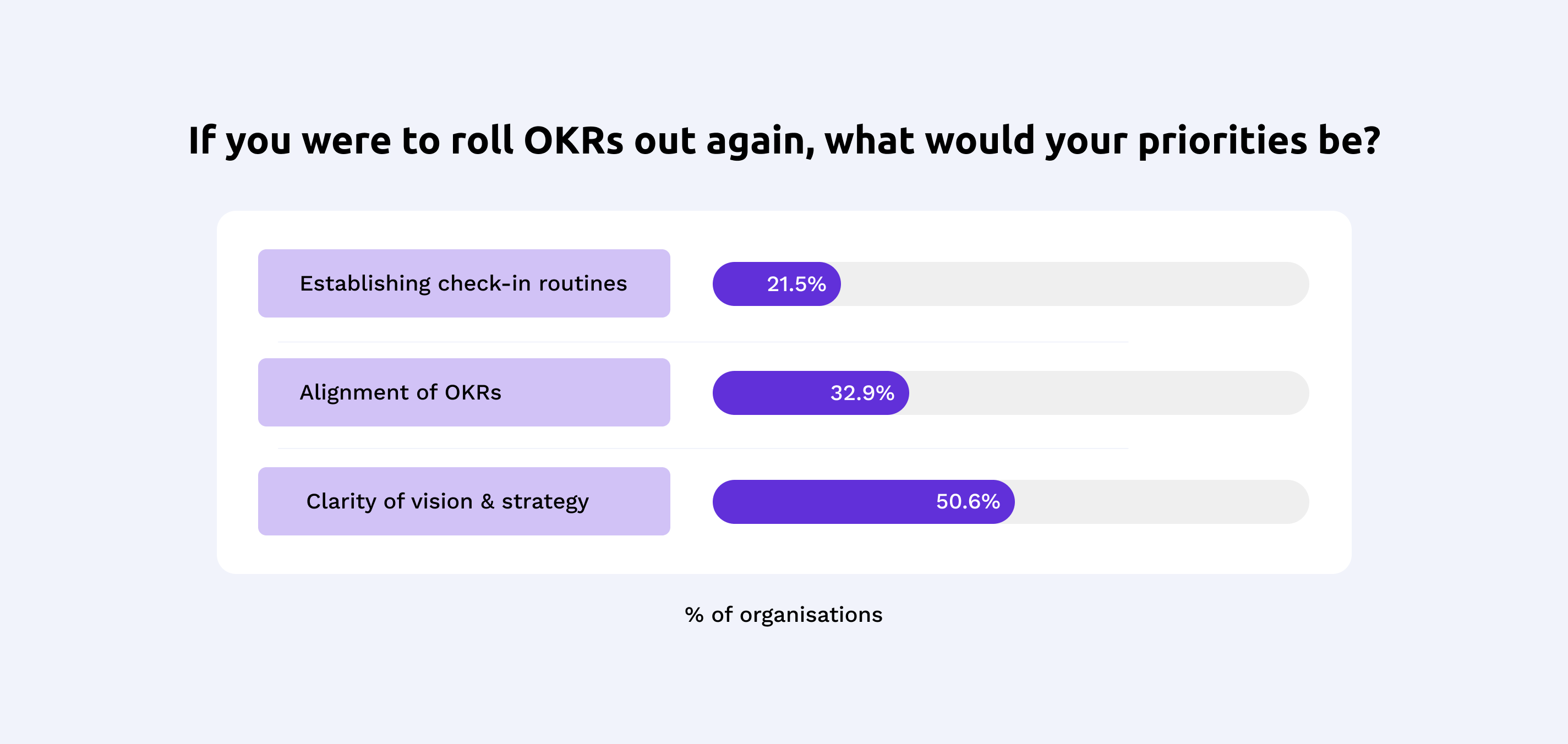
Repetitive communication
Repetitive communication during the internal launch of OKR in a company is crucial for several reasons. Firstly, it ensures all employees, regardless of prior knowledge, understand the OKR concept clearly. Furthermore, repetition reinforces the message and its significance, providing an opportunity to answer questions and address doubts. It’s worth noting that what may feel like repetition to the leadership is often new information for many employees. Adhering to the launch plan, even if it seems repetitive, is crucial for a smooth and successful OKR implementation.
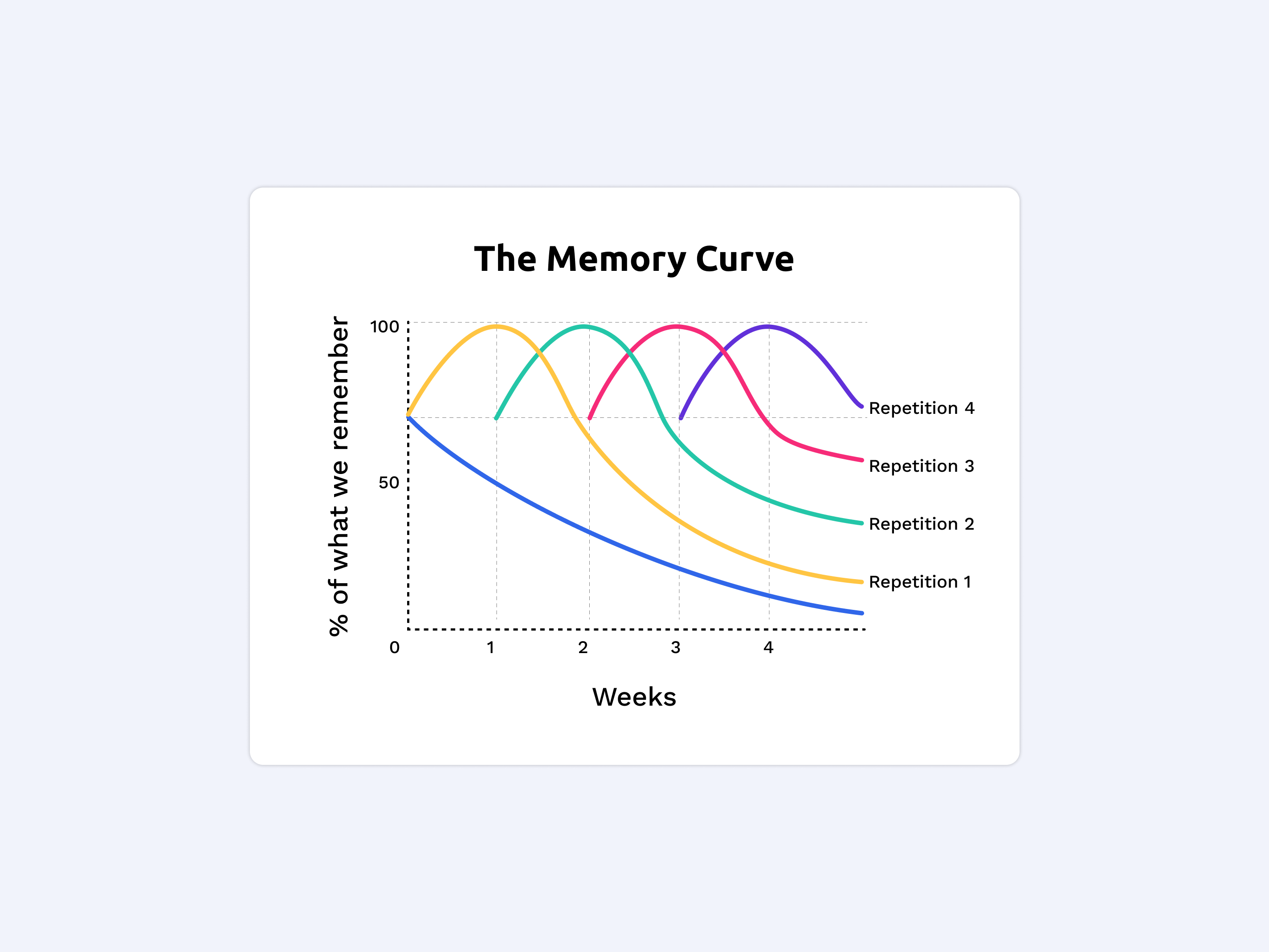
Quality in work
A potential pitfall that can arise when working with measurable results/Key Results is that less consideration is given to the quality of the work.
For example, let’s say you are launching a new website. It is, of course, desirable for the site to look professional and aesthetically pleasing. However, this is an aspect that cannot be easily quantified in OKR. Assessing aesthetics and appearance requires specific expertise, a sense of nuance, and an experience that cannot always be expressed in numbers. Striving to quantify these aspects can result in a superficial assessment that does not reflect the true quality of the work.
Another example where the quality of work is neglected is when developing and launching a new product. Setting quantitative goals in the form of sales figures can lead to a rush to complete the product and launch it quickly. This, in turn, can result in quality issues, such as bugs and functional flaws. Focusing exclusively on numbers can lead to the actual product quality being overlooked.
Evaluate how the implementation has gone. It is essential to listen to various perspectives and opinions about the OKR framework.
Some critical voices have expressed the following viewpoints:
Cumbersome implementation: Some believe that the implementation of OKR became too complicated or cumbersome, suggesting that the process was more demanding than necessary.
Too many processes: For some organizations, it became overwhelming to manage budget processes, strategic work, and OKR simultaneously. This can lead to overload and reduced efficiency.
Lack of coordination: If all teams continue to work in different ways, it may indicate a lack of coordination and a challenge in bringing together all parts of the organization.
KPI overload: Some may have felt that they are already measuring many KPIs and do not see clearly how OKR differ from the existing practices.
Despite these critical voices, there is also a hope that the majority feel that OKR have brought clarity to the organization’s goals. To gain a better understanding of how OKR are perceived and how they impact the organization, an internal survey can be useful.
Proposed questions in a survey to employees about OKR:
Clarity of goals: Do you feel that OKR have increased clarity about the company’s goals and direction?
Implementation: How did you experience the implementation of OKR? Was it smooth or complicated?
Coordination: Have OKR promoted coordination and a more unified direction for different teams and departments?
Efficiency: Do you believe that OKR have contributed to increasing the company’s efficiency and results?
KPI comparison: How do you see the difference between OKR and the existing KPIs measured within the organization?
Challenges: What specific challenges or obstacles have you encountered in using OKR in your work?
Feedback and improvements: Do you have any suggestions on how the OKR process can be improved or adapted to better support the organization’s goals?
Such an internal survey can provide insights into how OKR affect the organization and help identify areas that need improvement or adjustment to maximize the framework’s value and user-friendliness.
Continuous improvement with retrospectives
A retrospective is a valuable routine when working with OKR as it promotes continuous improvement. It provides an opportunity to review and evaluate how well one has performed against their OKR. This is a crucial part of assessing whether the goals have been achieved and understanding why or why not. By reflecting on what has worked well, one can identify the success factors that should be maintained and reinforced. It also offers a chance to identify challenges, obstacles, or failures that have impacted the outcome.
Regarding how often a retrospective should be held, it can vary depending on the organization’s culture and needs. Here are some guidelines:
👥 Team Level: Within a team, it is common to hold a retrospective regularly, typically after each OKR cycle. This gives the team the opportunity to continuously improve its performance and work processes.
🌐 Leadership Team: At the leadership level, a retrospective can be held with longer intervals, such as after each full year or half-year period. It gives the leadership team time to evaluate results at a higher level.
When it comes to the format of a retrospective, there are several methods to choose from. Such as “Stop-Start-Continue,” “Happy-Sad-Mad,” and “Timeline,” among others. The format may vary depending on the organization’s preferences and needs. The most important thing is that retrospectives promote open dialogue, honesty, and the identification of concrete actions for improvement.
Here are some basic guidelines:
🌟 Create a safe and open environment where everyone can share their opinions and experiences.
💡 Identify specific actions based on the identified success factors and challenges.
🔍 Follow up on these actions in the next OKR cycle to measure improvements.
🔄 A retrospective is a crucial component in making OKR more than just a measurement tool. They become a tool for continuous improvement and development within the organization.

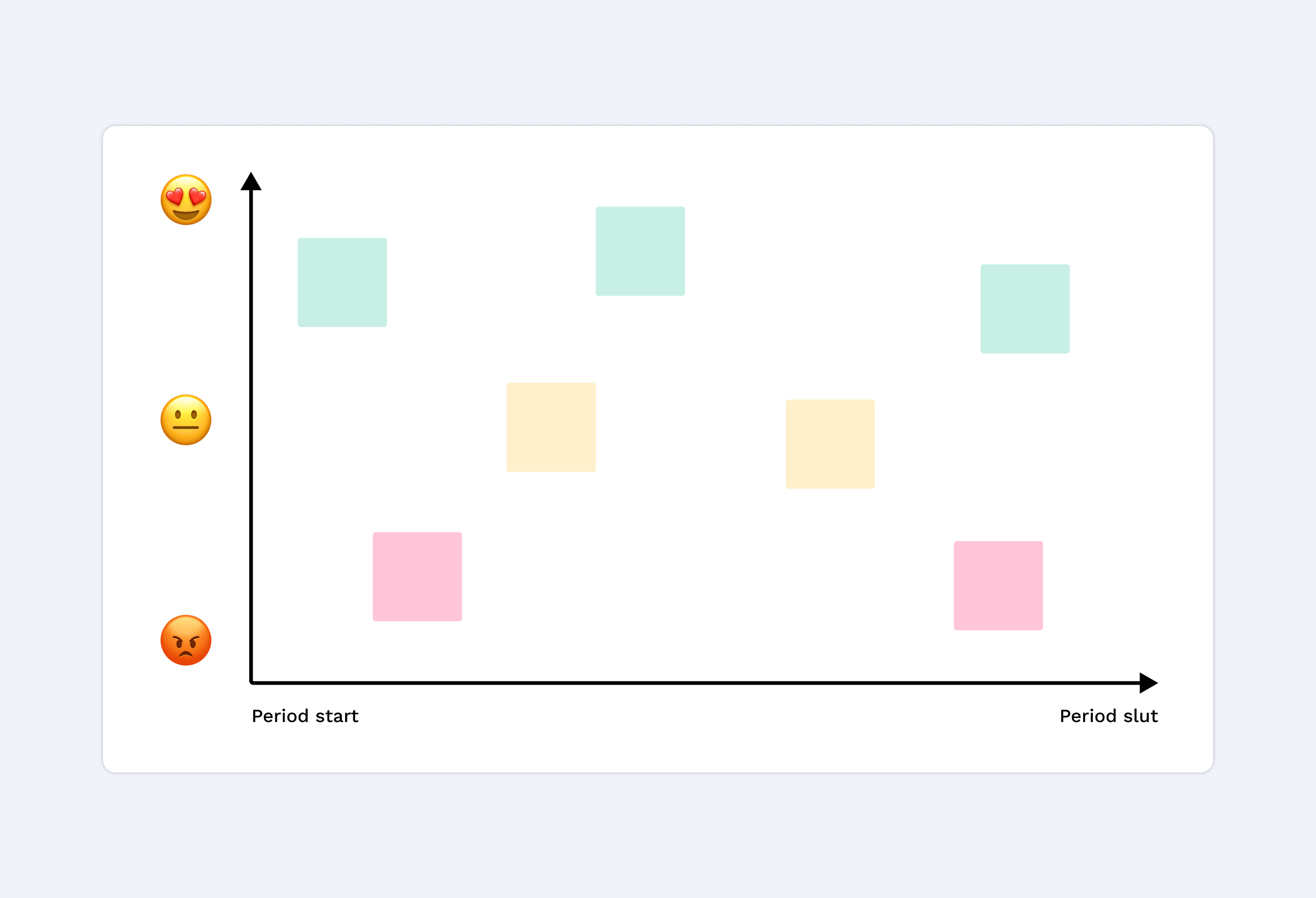
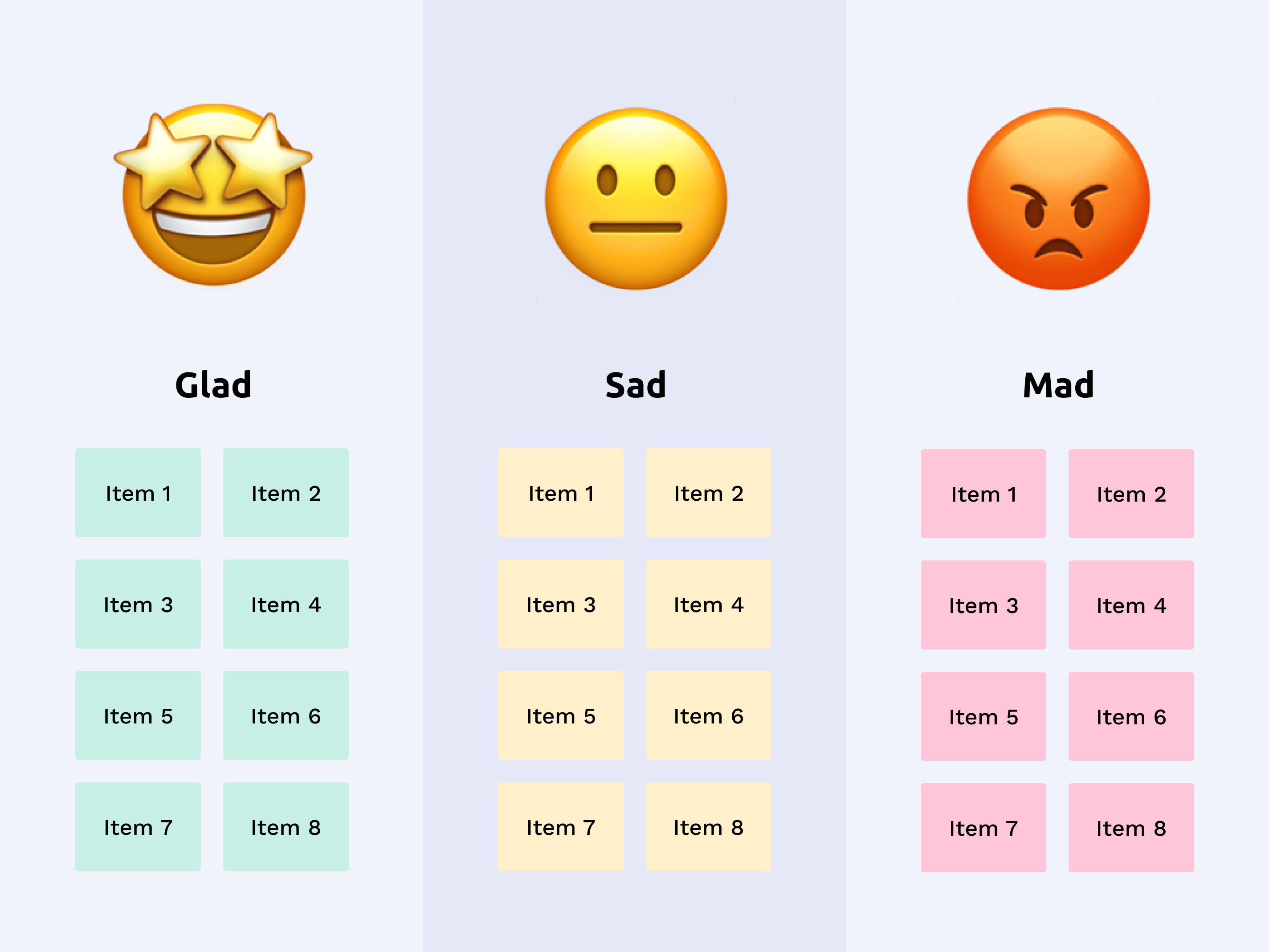
Increased well-being and productivity
The implementation of OKR can bring a range of positive effects to organizations and their employees. Here are some impressive results achieved by using OKR:
❤️ 125% Lower Burnout By setting clear goals and tracking progress, organizations can reduce burnout among their employees, creating a more sustainable work environment.
🏆 35% More Company Engagement With OKR, employees become more engaged as they have a clear understanding of the organization’s goals and how their work contributes to achieving them.
🦸 21% More Effective Leaders OKR help leaders focus on the most strategic goals and priorities, increasing their effectiveness and leadership.
😍 46% More Job Satisfaction When employees see their efforts resulting in goal achievement, they become more satisfied with their work and experience increased fulfillment.
📈 16% Better Performing Employees OKR create a structured and measurable method to improve performance, leading to better results from employees.
This statistics indicates that OKR are not only a tool to achieve corporate goals but also a method to promote well-being, engagement, and productivity among employees. By using OKR, organizations can create a culture of clarity, focus, and achievement that benefits both the company and its employees.
OKR Software: NOQX
NOQX kicks teamwork up a notch with its goal-setting tool. We offer a user-friendly experience that helps companies get everyone on the same page with their goals and sparks action. Our reporting features give you the lowdown for making smart decisions based on data, making your workplace more efficient and successful.

